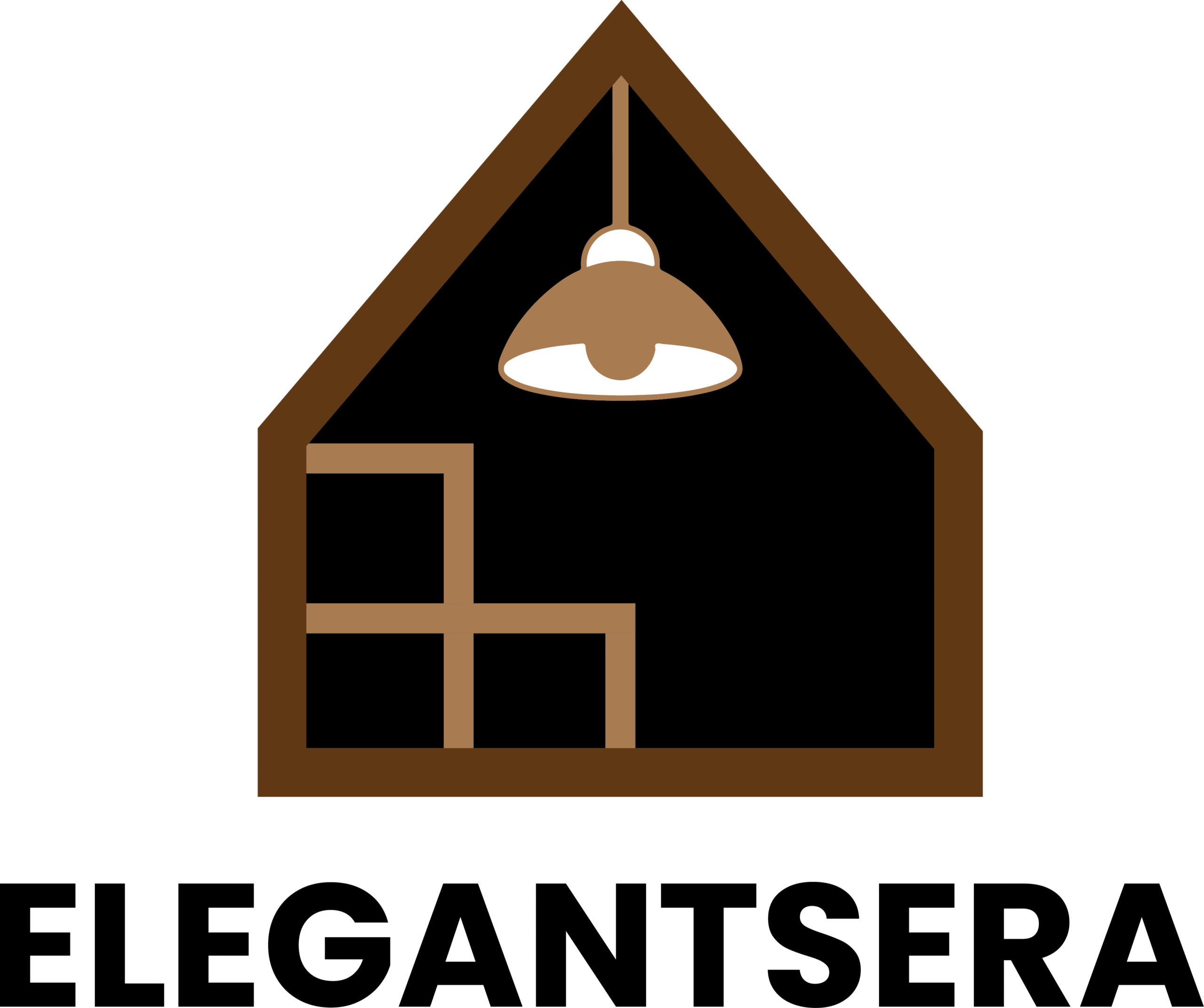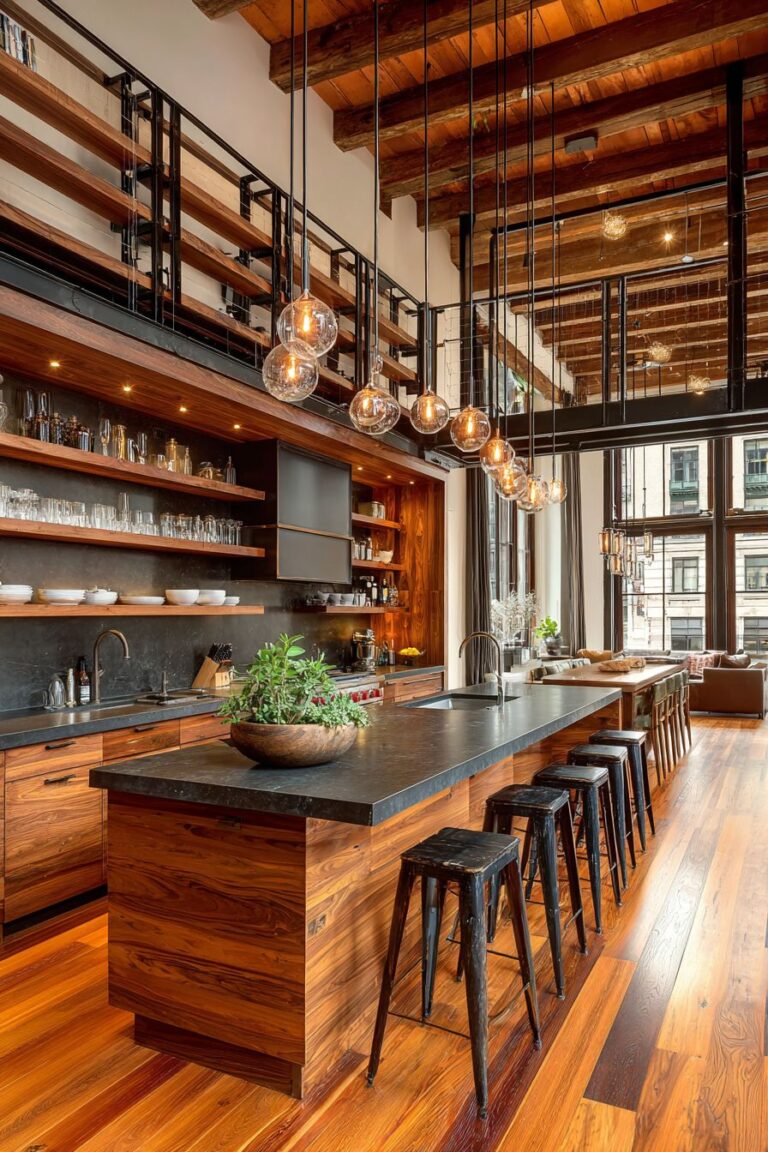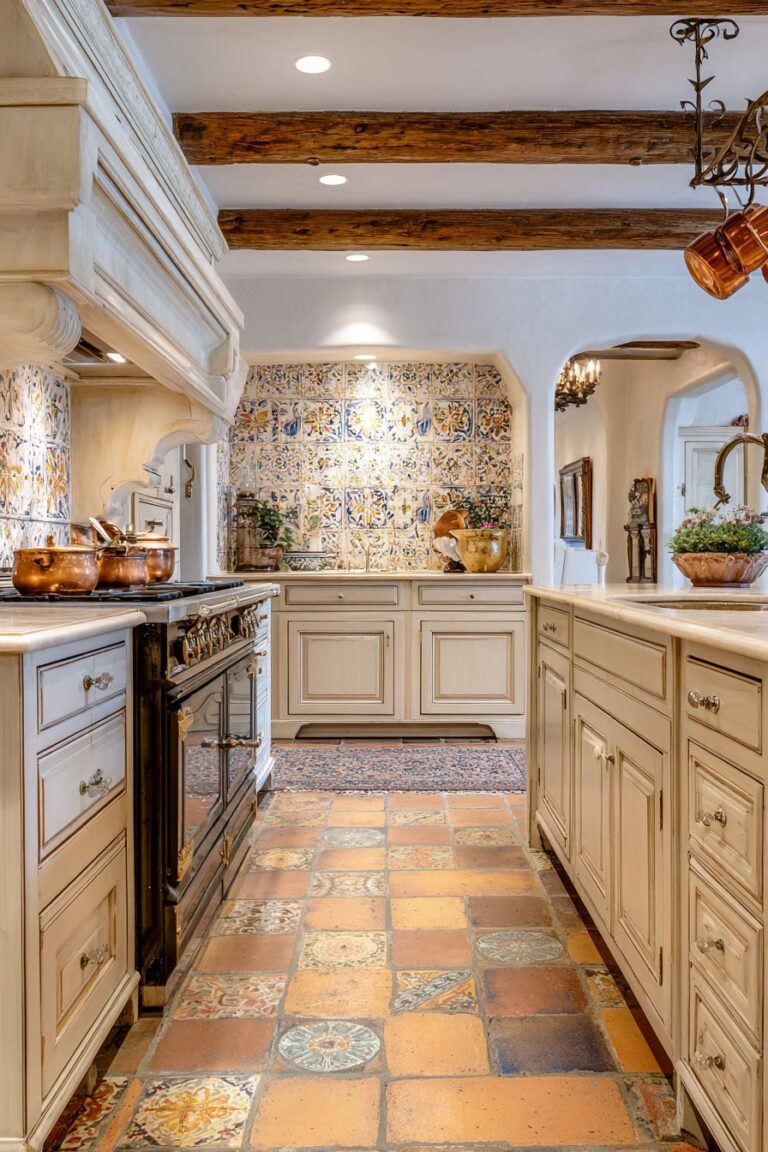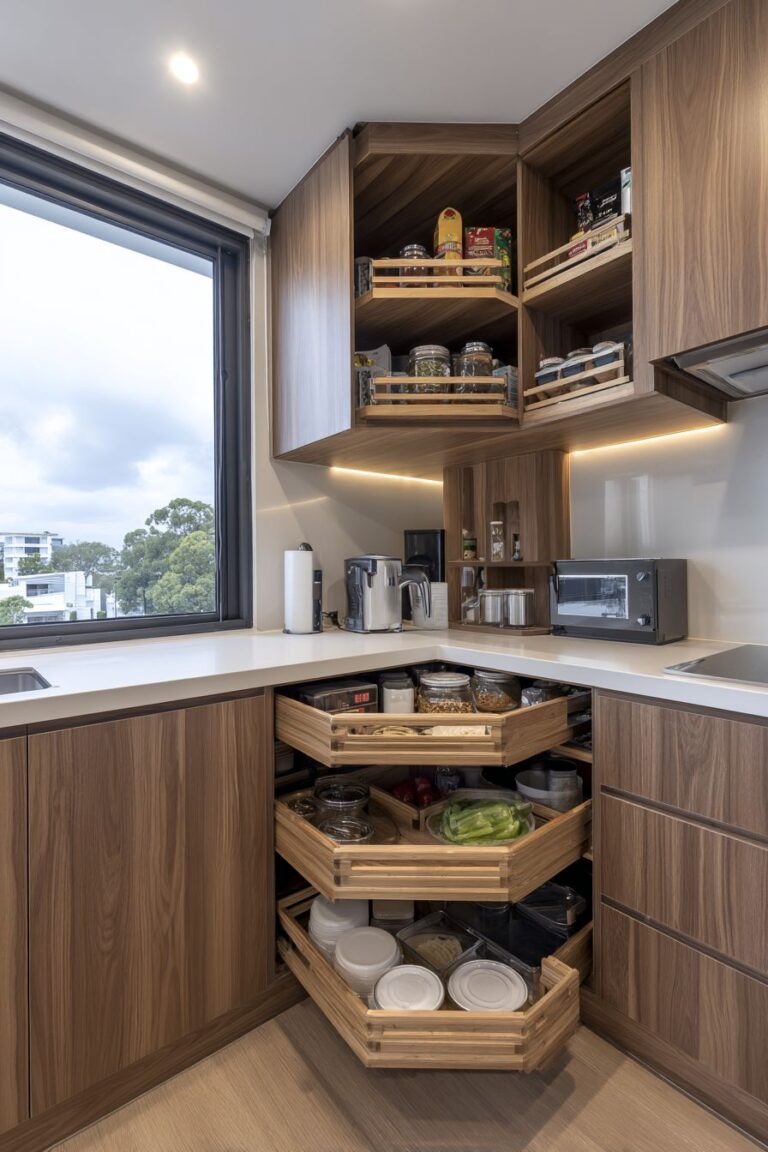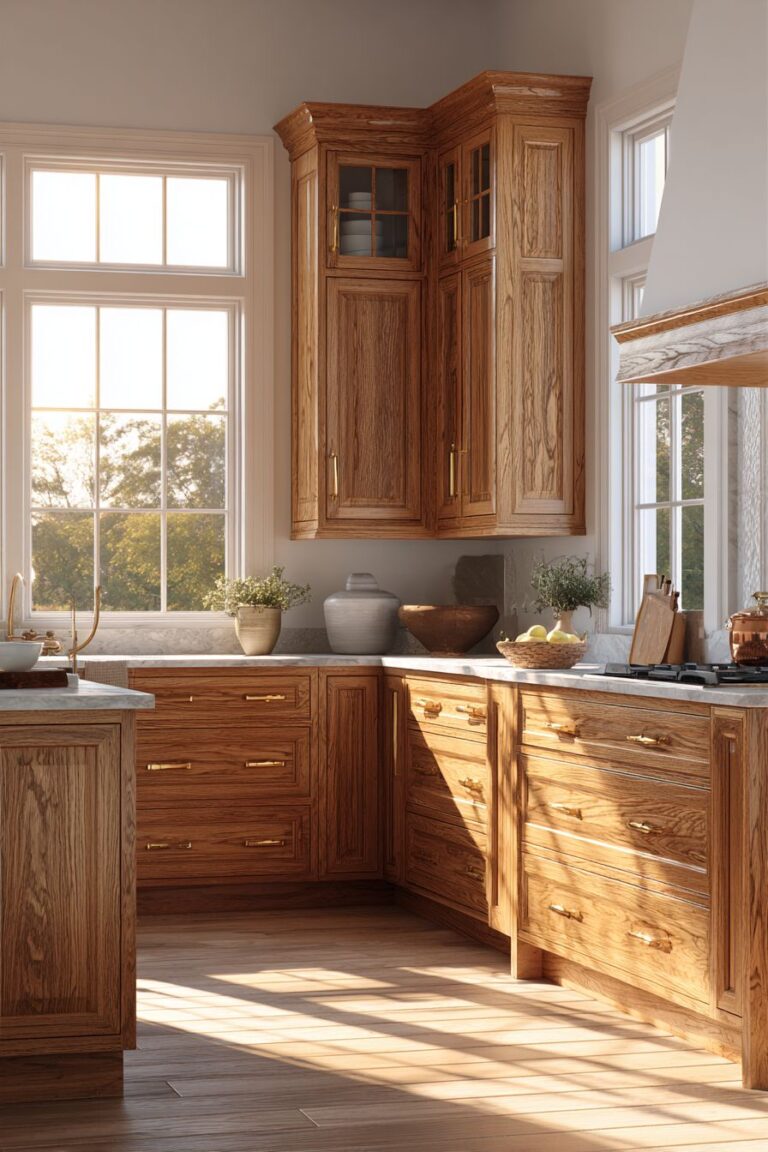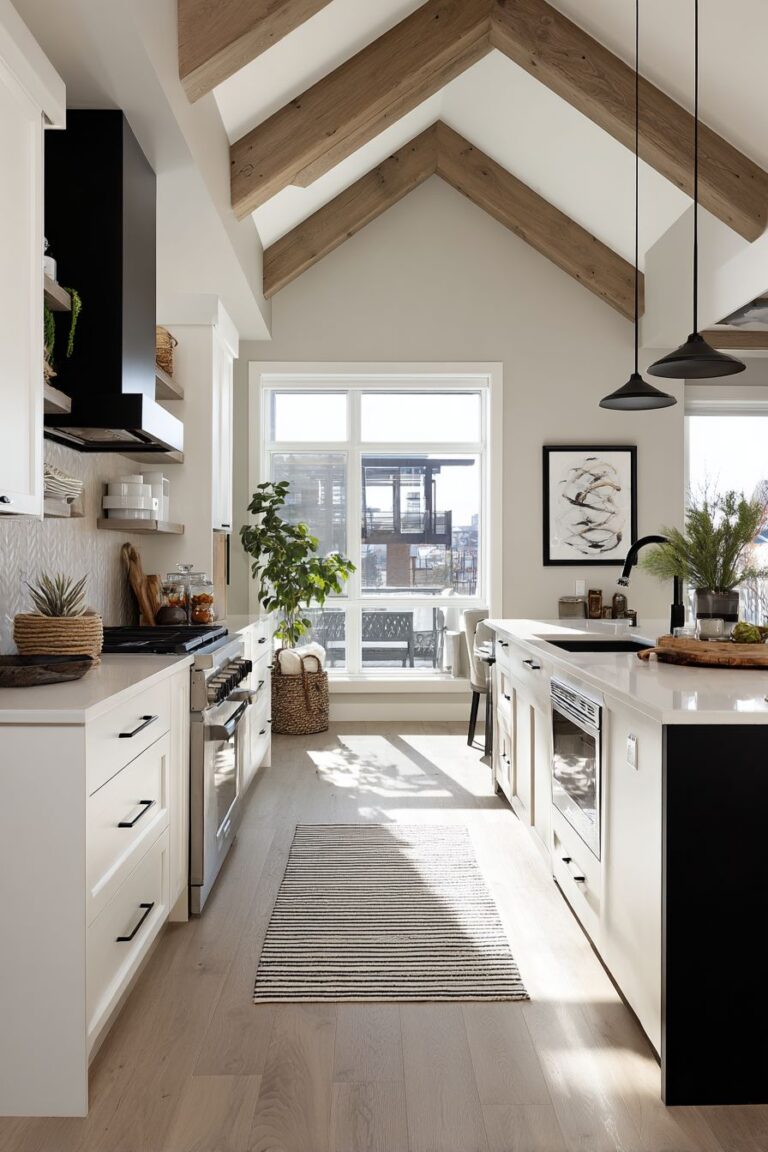19+ Wood Kitchen Ideas: Designs That Celebrate Natural Beauty
Wood kitchens represent the pinnacle of timeless design, where natural beauty meets functional excellence. In today’s world of sleek minimalism and industrial aesthetics, wood continues to reign supreme as the material of choice for homeowners seeking warmth, character, and enduring appeal in their kitchen spaces. The organic textures, rich grain patterns, and inherent versatility of wood create environments that feel both sophisticated and inviting, making the kitchen truly the heart of the home.
The beauty of wood lies in its incredible diversity – from the honey-warm tones of oak and maple to the deep, luxurious hues of walnut and cherry, each species brings its own personality and charm to kitchen design. Whether you’re drawn to the rustic authenticity of reclaimed barn wood or the sleek sophistication of contemporary teak, wood offers endless possibilities for creating spaces that reflect your personal style while maintaining the functional demands of modern living.
This comprehensive guide explores twenty distinct wood kitchen designs, each showcasing unique approaches to incorporating this versatile natural material. From traditional farmhouse aesthetics to cutting-edge contemporary designs, these concepts demonstrate how wood can be the foundation for kitchens that are both beautiful and highly functional, proving that natural materials never go out of style.
1. Rich Walnut Cabinetry with Natural Grain Patterns

Enter a kitchen where rich walnut cabinetry commands attention with its deep chocolate tones and striking natural grain patterns. The warm honey undertones in the wood create an immediately welcoming atmosphere, while the varied grain patterns tell the story of each tree’s unique growth. The centerpiece island features a stunning live-edge wooden countertop that preserves the natural contours of the tree, creating an organic focal point that anchors the entire design.
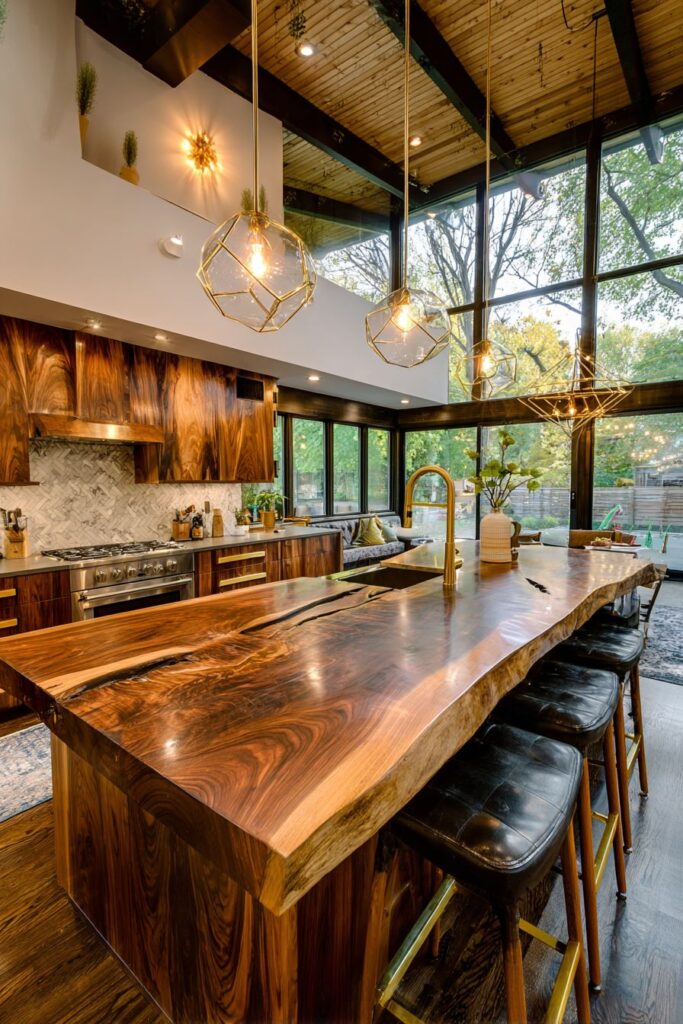
Brass hardware adds a luxurious accent against the dark wood, while carefully positioned pendant lighting highlights the dimensional quality of the grain patterns. Large windows flood the space with natural light, creating subtle shadows that emphasize the organic beauty of the wood elements and reveal the intricate details that make walnut such a prized cabinet material.
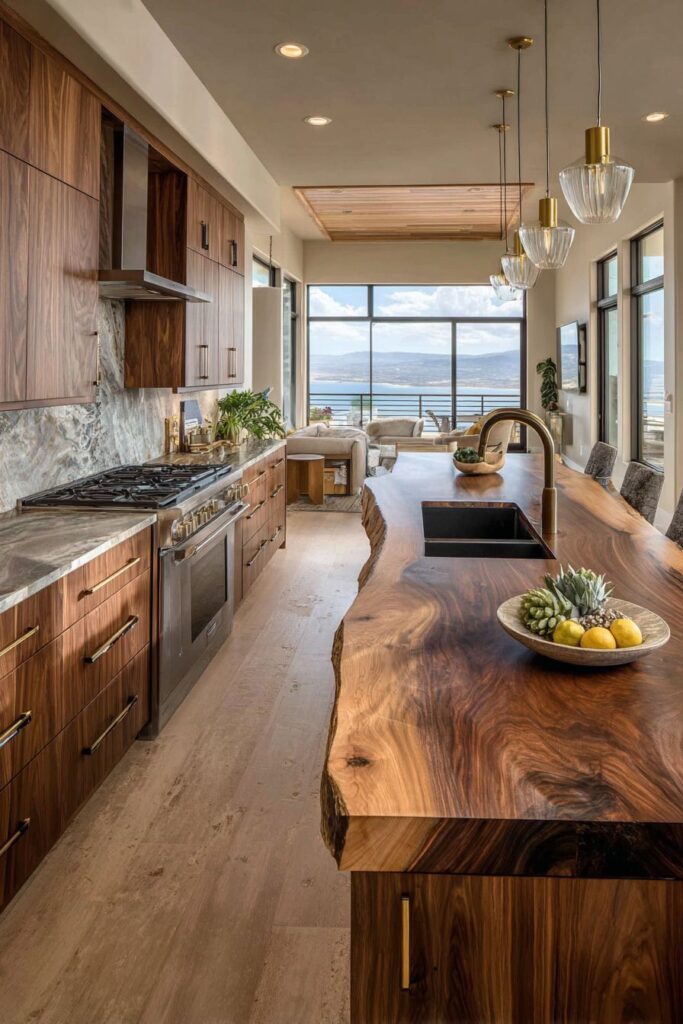
The interplay between the structured cabinetry and the free-form live-edge countertop creates visual tension that keeps the design dynamic and interesting. Professional lighting design ensures that every nuance of the wood’s natural beauty is showcased, from the tight grain patterns in some boards to the dramatic swirls and burls that make walnut so distinctive.
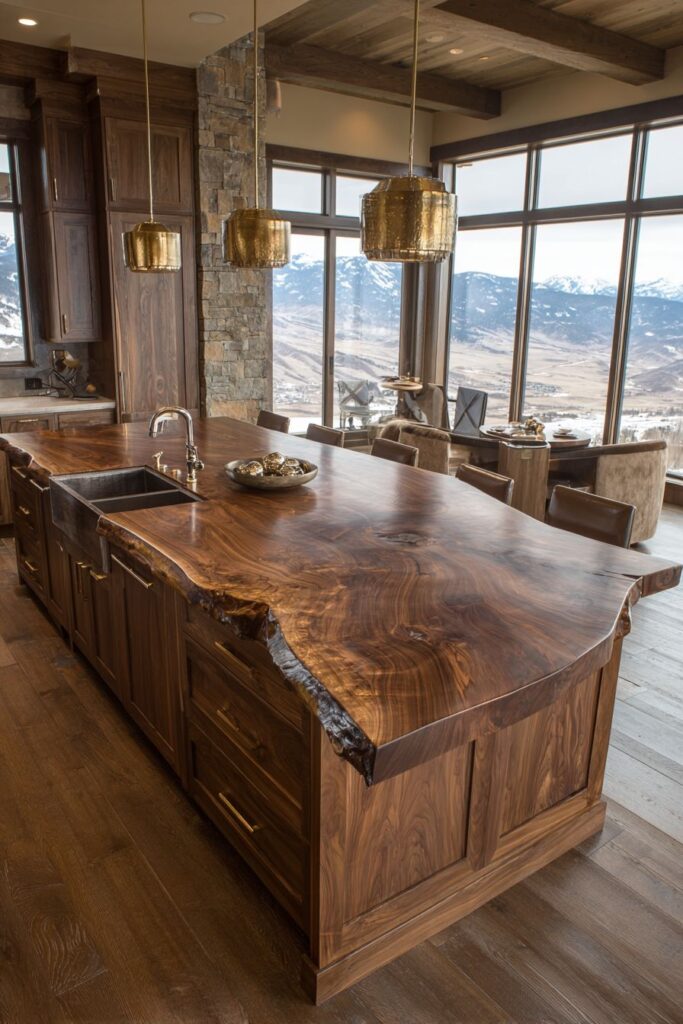
Key Design Tips:
- Choose walnut for its rich color depth and distinctive grain character
- Incorporate live-edge elements to contrast with structured cabinetry
- Use brass hardware to complement warm wood tones
- Position lighting to highlight wood grain variations and natural beauty
- Maximize natural light to reveal subtle color variations throughout the day
2. Modern Flat-Panel Oak with Waterfall Edge
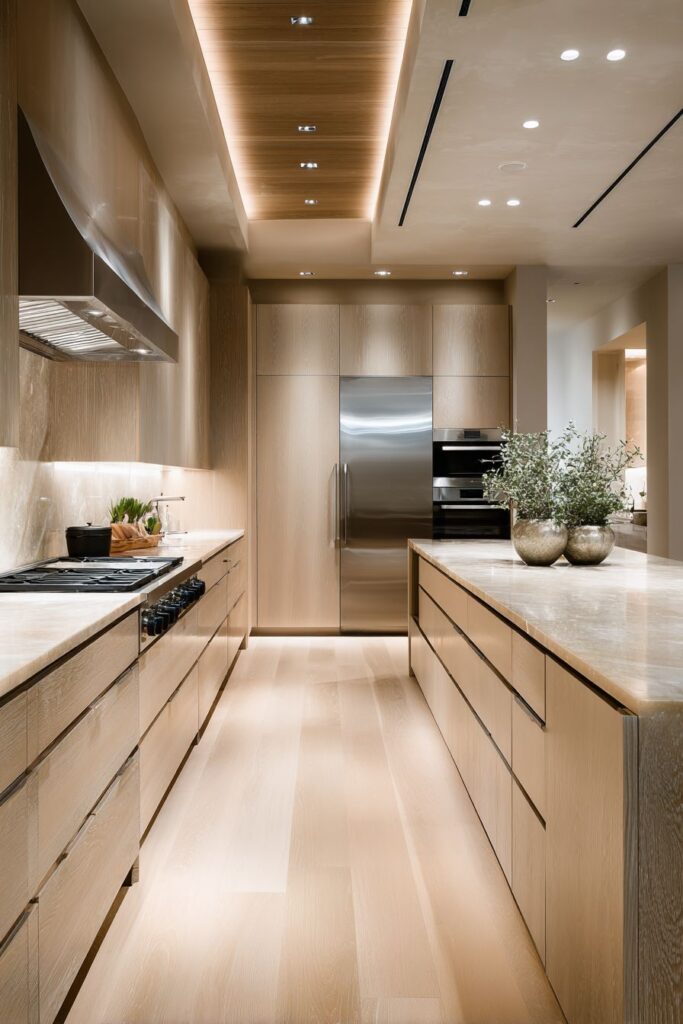
Sleek sophistication defines this modern wood kitchen featuring flat-panel oak cabinets in a natural blonde finish that embodies contemporary minimalism. The clean lines and lack of ornamental details allow the natural beauty of the oak grain to take center stage, while the pale coloring creates an airy, spacious feeling that’s perfect for modern living.
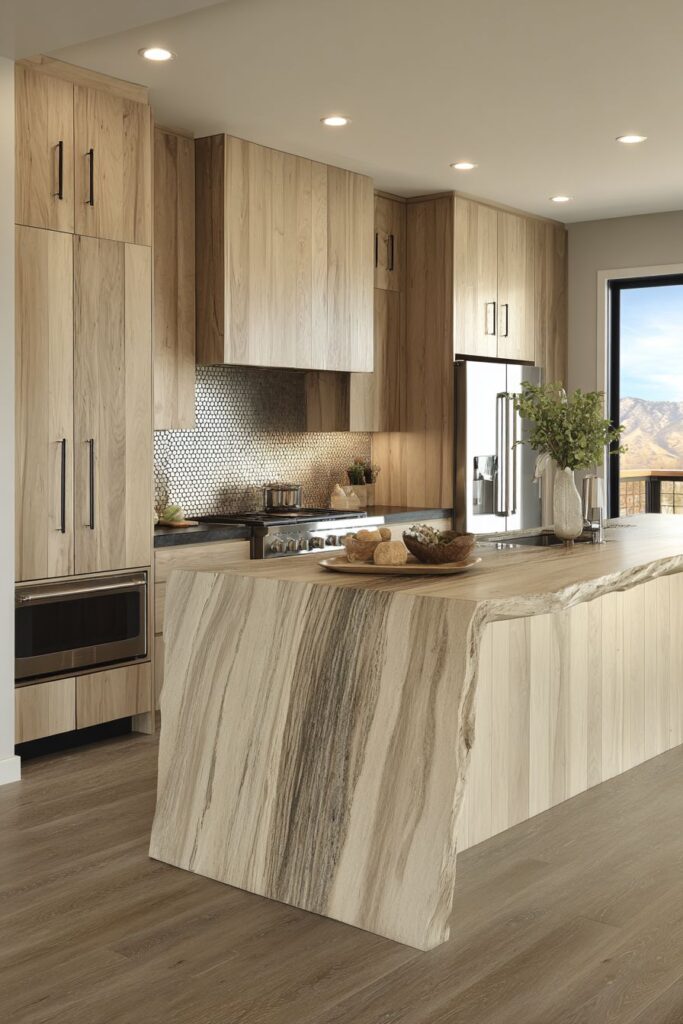
The showstopping element is the waterfall-edge wooden countertop that cascades dramatically to the floor, creating a striking architectural statement. This bold design choice transforms the kitchen island from mere workspace into a sculptural element that demonstrates wood’s versatility in contemporary design. The continuous grain flow from horizontal to vertical surfaces creates visual movement and draws the eye around the space.
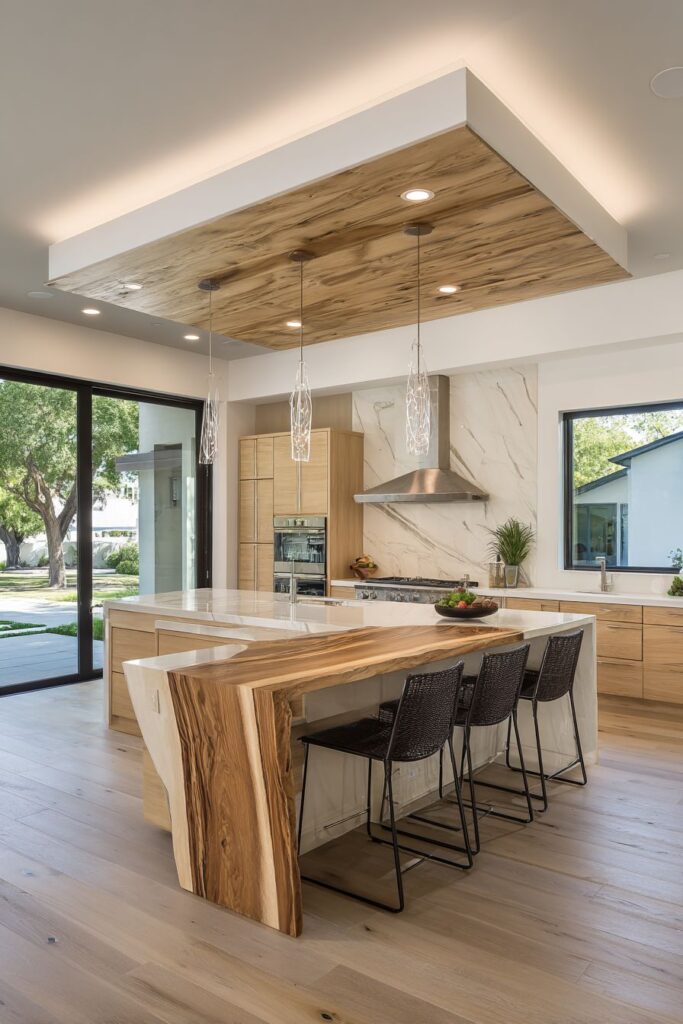
Stainless steel appliances provide the perfect contemporary contrast to the warm wood elements, while recessed lighting illuminates every subtle variation in the oak’s grain pattern. The balance between warm natural materials and cool modern elements creates a sophisticated aesthetic that feels both current and timeless.
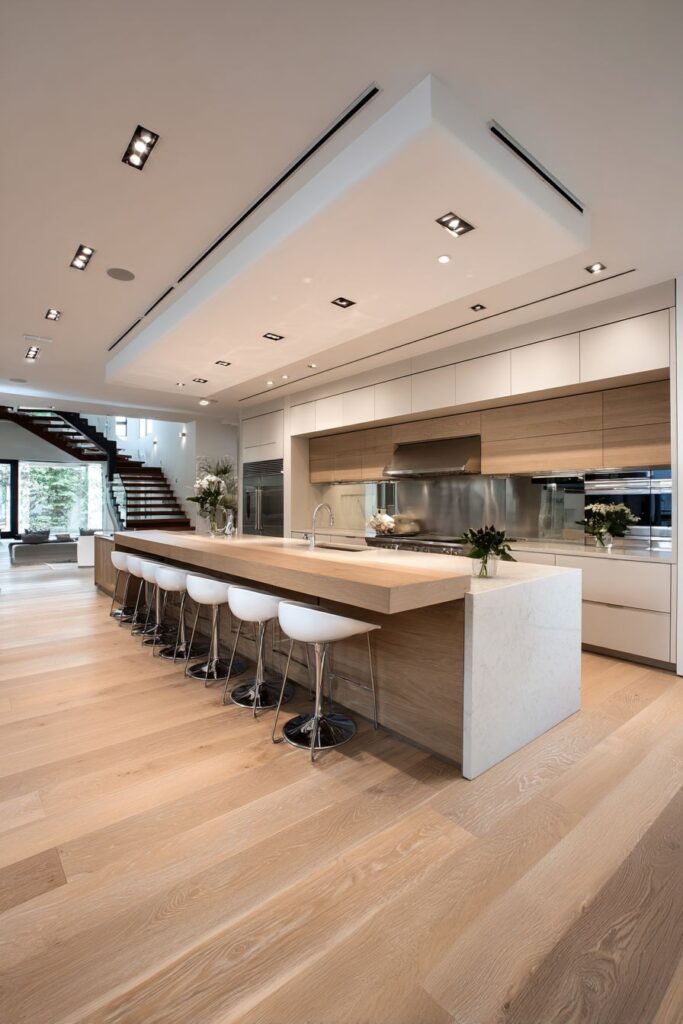
Key Design Tips:
- Select blonde oak for its light, airy appearance in modern settings
- Create dramatic impact with waterfall-edge countertops
- Balance warm wood with cool stainless steel for contemporary appeal
- Use recessed lighting to highlight grain details without visual clutter
- Maintain clean lines to let natural wood beauty speak for itself
3. Rustic Reclaimed Barn Wood Character
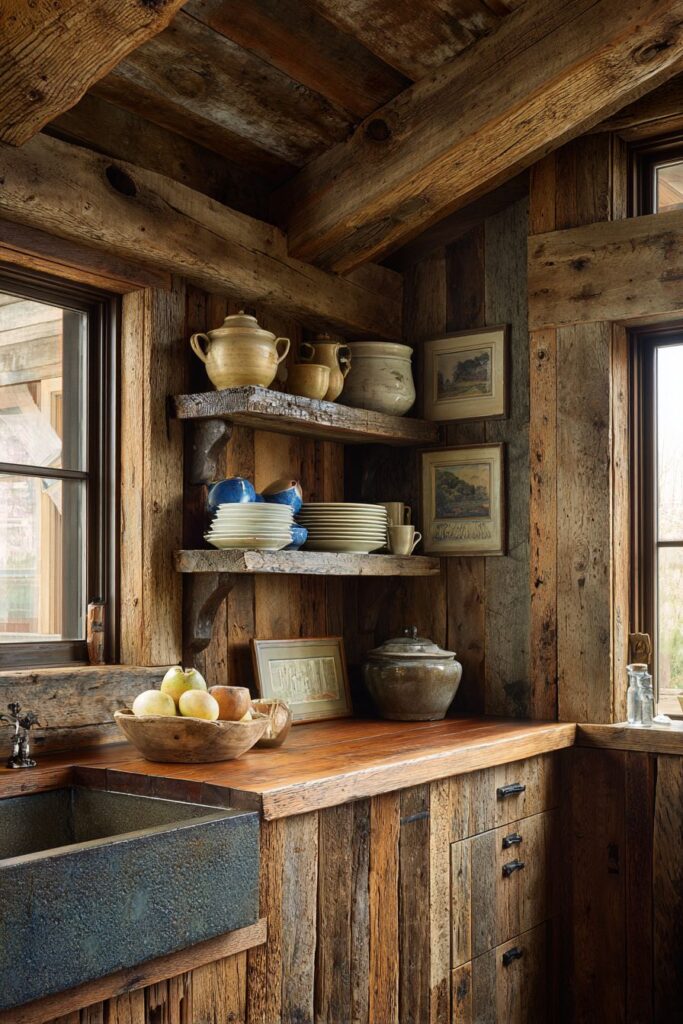
Step into a kitchen where history lives in every weathered board and visible knot of the reclaimed barn wood cabinetry. The authentic patina tells stories of decades past, while the varied textures and natural imperfections create a lived-in warmth that’s impossible to replicate with new materials. Each cabinet door is unique, featuring the character marks, nail holes, and wear patterns that give reclaimed wood its distinctive personality.
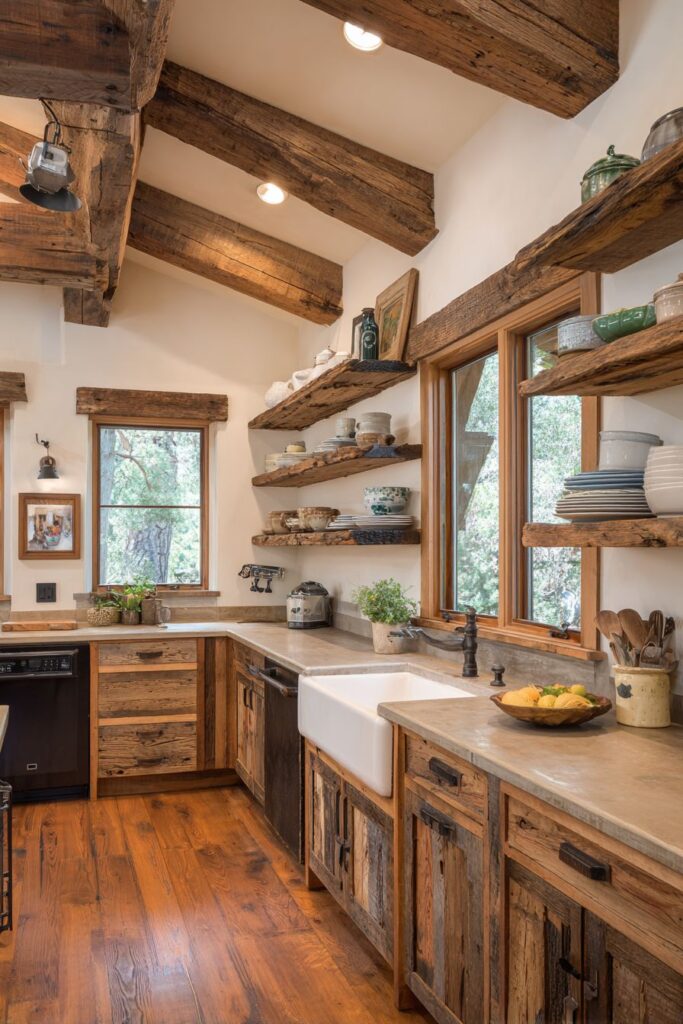
Open shelving crafted from matching reclaimed wood displays ceramic dishes like works of art, while the farmhouse sink positioned beneath a window with natural light creates a classic focal point. The integration of modern functionality with authentic rustic materials demonstrates how reclaimed wood can bridge the gap between past and present.
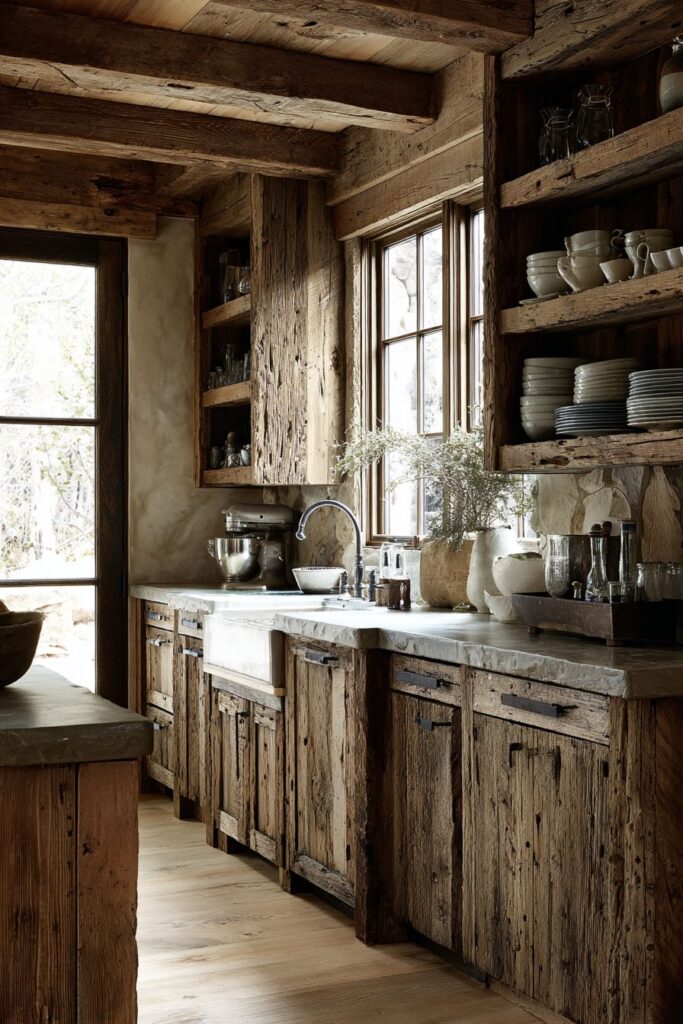
Exposed wooden beams overhead echo the cabinet material, creating a cohesive rustic aesthetic that envelops the space in natural warmth. The varied tones within the reclaimed wood – from silvered grays to rich browns – create visual interest without the need for artificial color variations.
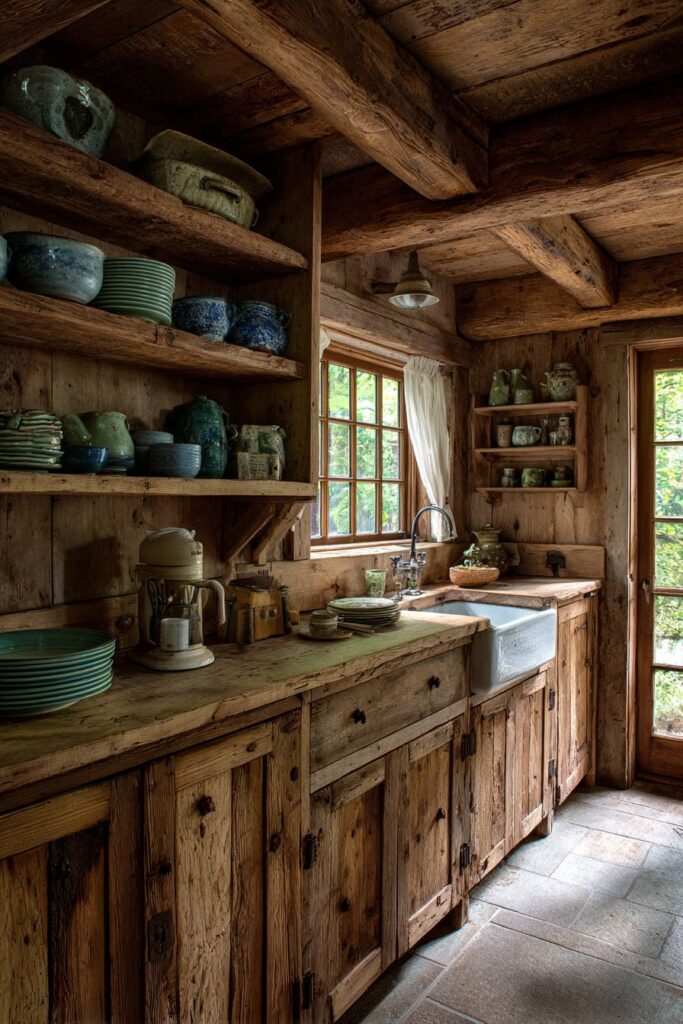
Key Design Tips:
- Choose reclaimed wood for authentic character and environmental sustainability
- Embrace imperfections like knots and wear marks as design features
- Combine rustic materials with modern functionality for best of both worlds
- Use consistent wood species throughout for design cohesion
- Allow natural patina to be the primary color palette
4. Scandinavian Light Birch Minimalism
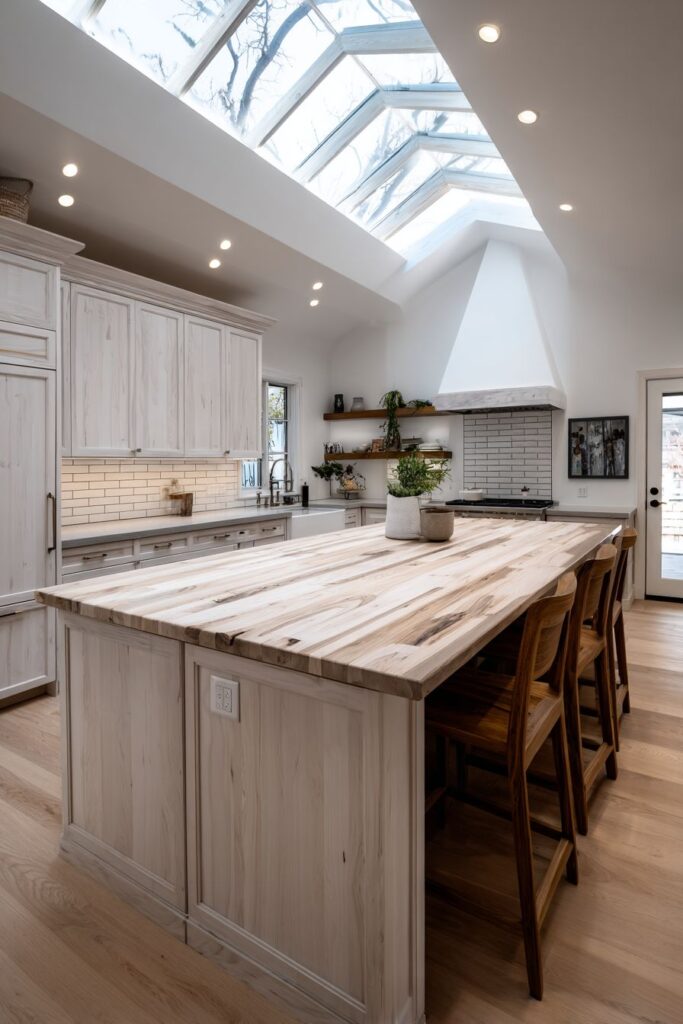
Nordic design principles shine in this Scandinavian wood kitchen featuring light birch cabinetry with minimal hardware and impossibly clean lines. The pale wood tones reflect the Scandinavian philosophy of bringing light and nature indoors, while the simplified cabinet profiles eliminate visual clutter to create a serene, contemplative environment.

The kitchen island’s butcher-block countertop showcases birch’s subtle grain patterns, surrounded by simple wooden bar stools that maintain the aesthetic’s purity. The natural variations in the birch grain provide just enough visual interest without overwhelming the clean design philosophy, while the light color helps smaller spaces feel more expansive.
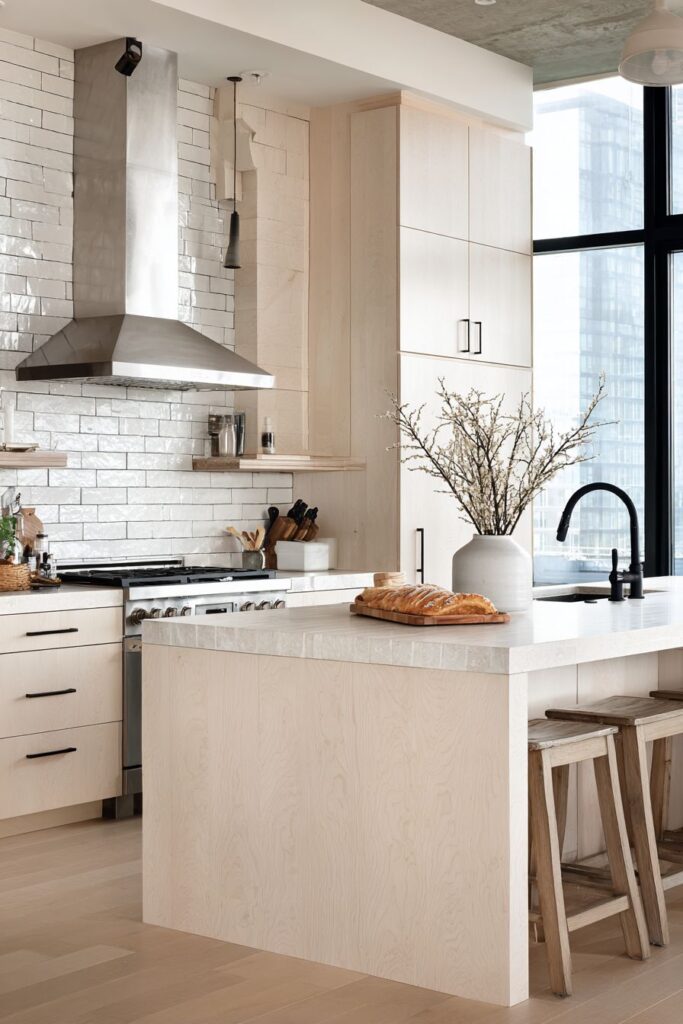
White subway tile backsplash provides gentle contrast while maintaining the Nordic color palette, and natural daylight streaming through large windows highlights the pale wood tones to create an airy, breathable atmosphere. The functional layout emphasizes efficiency and simplicity – core tenets of Scandinavian design.
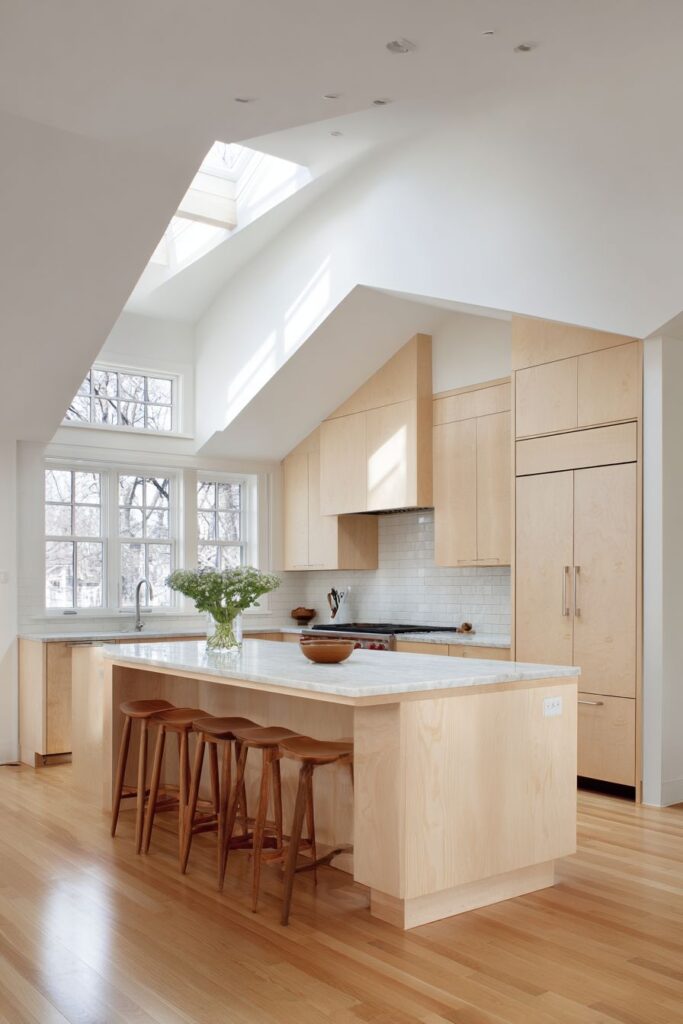
Key Design Tips:
- Select light woods like birch for airy, expansive feeling
- Minimize hardware and details for clean aesthetic lines
- Incorporate white elements to maintain Nordic color palette
- Maximize natural light to enhance pale wood tones
- Focus on functional efficiency over decorative elements
5. Traditional Dark Cherry Elegance
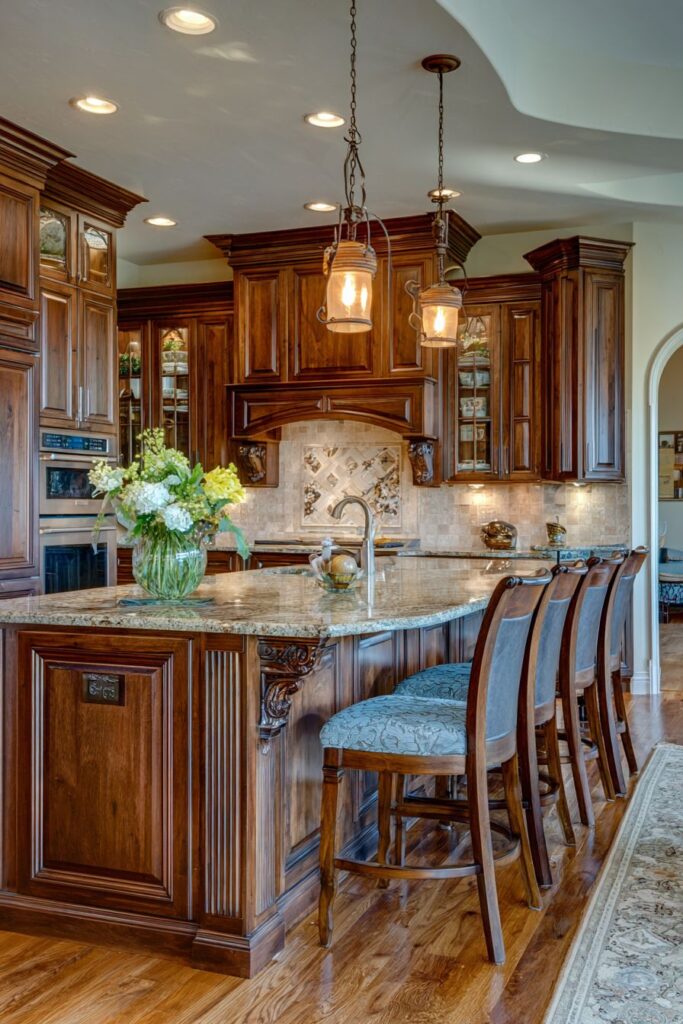
Sophisticated elegance permeates this traditional wood kitchen featuring dark cherry cabinets with raised panel doors and classic styling details. The deep, rich coloring of mature cherry wood creates an immediately luxurious atmosphere, while the traditional raised panel construction adds dimensional interest and timeless appeal that never goes out of style.
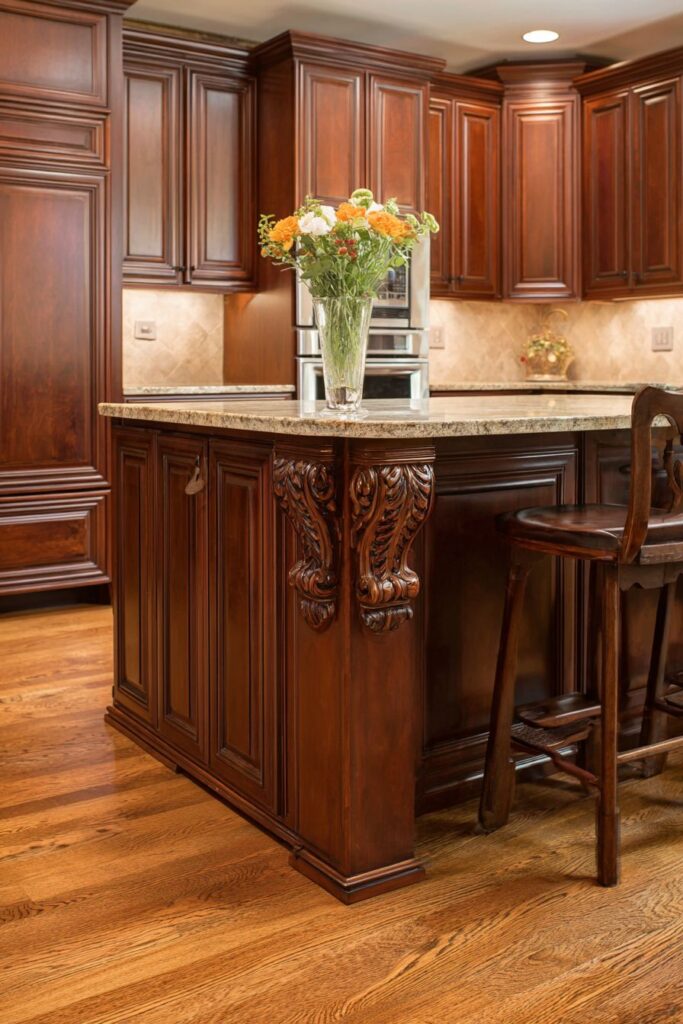
The substantial kitchen island includes a wooden breakfast bar with decorative corbels and classic detailing that showcases traditional woodworking craftsmanship. These architectural elements add visual weight and importance to the island, making it a true centerpiece rather than simply a workspace.
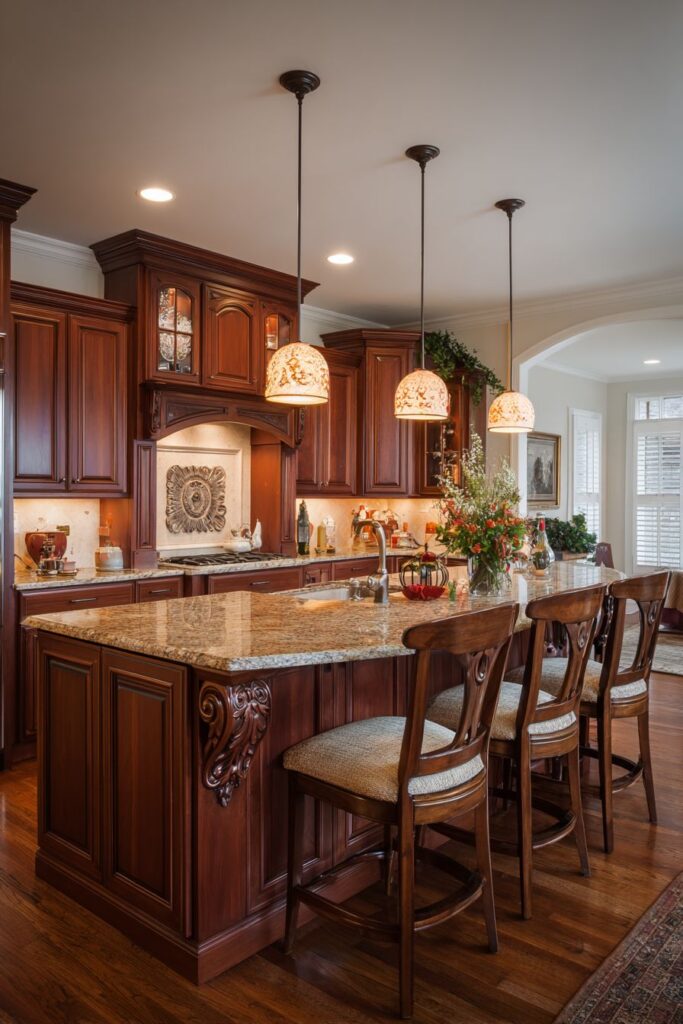
Warm under-cabinet lighting creates a golden glow that illuminates granite countertops while highlighting the rich depth of the cherry wood grain. The interplay between the warm wood and cool stone surfaces creates perfect balance, while the traditional styling details ensure this kitchen will remain elegant for decades to come.
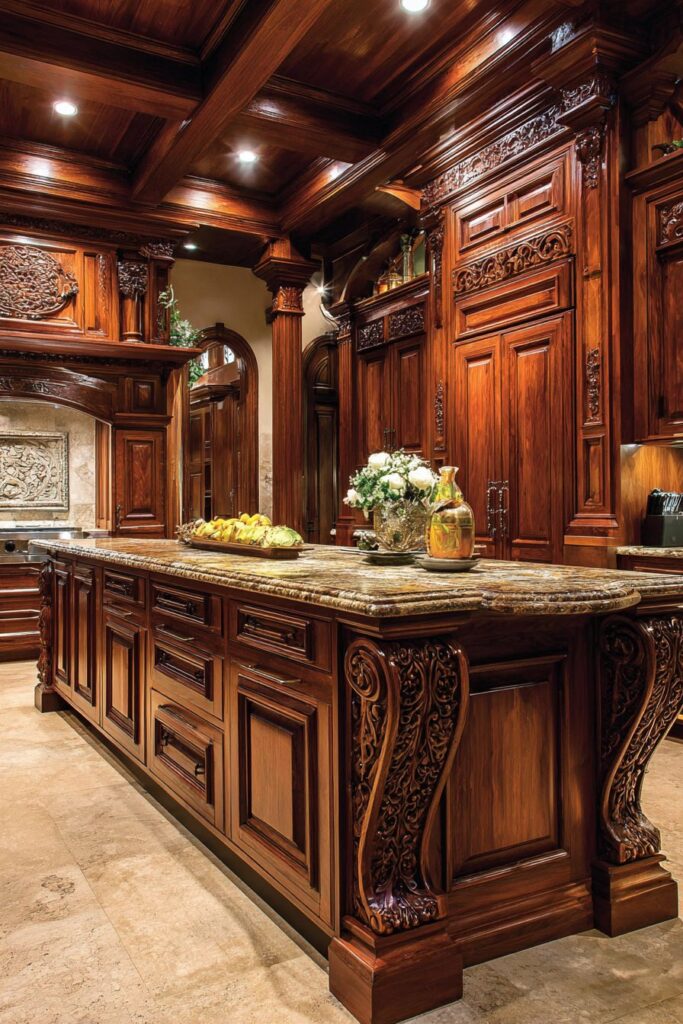
Key Design Tips:
- Choose cherry wood for its rich color depth and aging beauty
- Incorporate raised panels and traditional details for timeless appeal
- Add architectural elements like corbels for visual importance
- Use warm lighting to enhance wood grain and color richness
- Balance warm wood with cool countertop materials
6. Contemporary Teak with Horizontal Grain
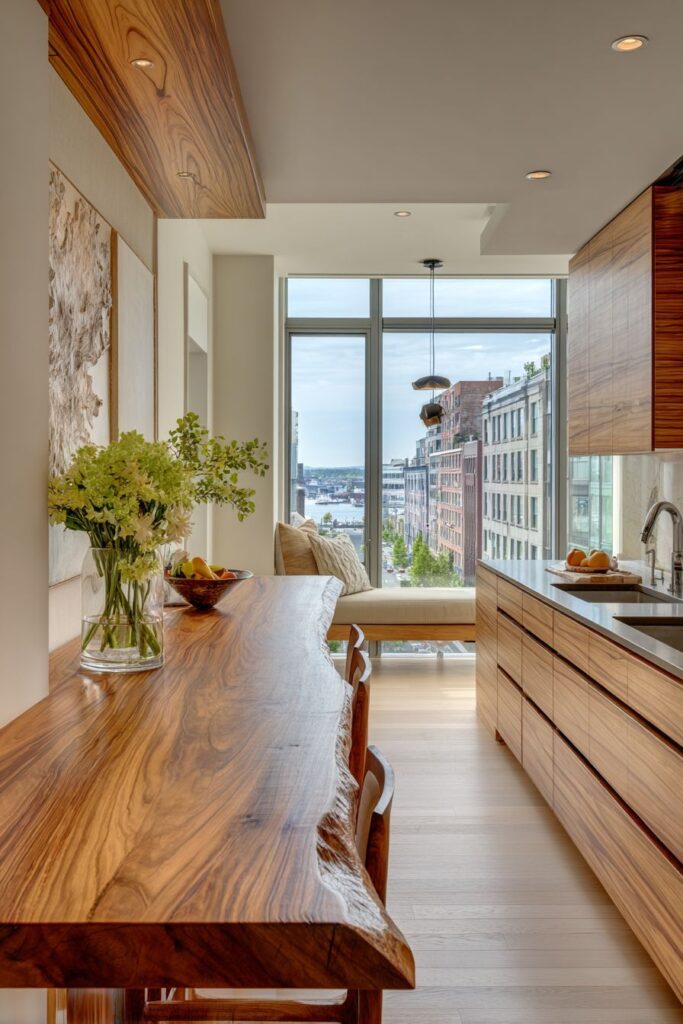
Modern sophistication reaches new heights in this contemporary wood kitchen featuring horizontal-grain teak cabinetry with integrated handles for ultimate sleek appeal. The linear grain pattern creates strong horizontal lines that make the kitchen appear wider and more expansive, while the integrated handle system maintains the clean, unbroken surface that contemporary design demands.
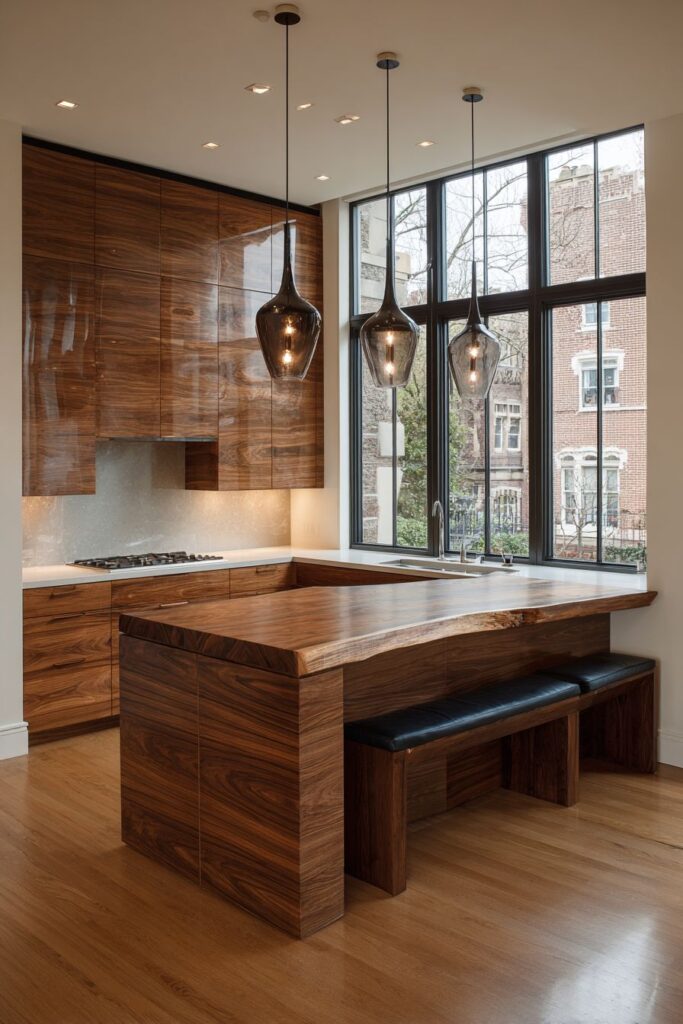
The kitchen peninsula showcases a thick wooden countertop with live-edge details that provide organic contrast to the structured cabinetry, while modern bar seating maintains the contemporary aesthetic. The combination of structured and organic elements creates visual tension that keeps the design interesting and dynamic.
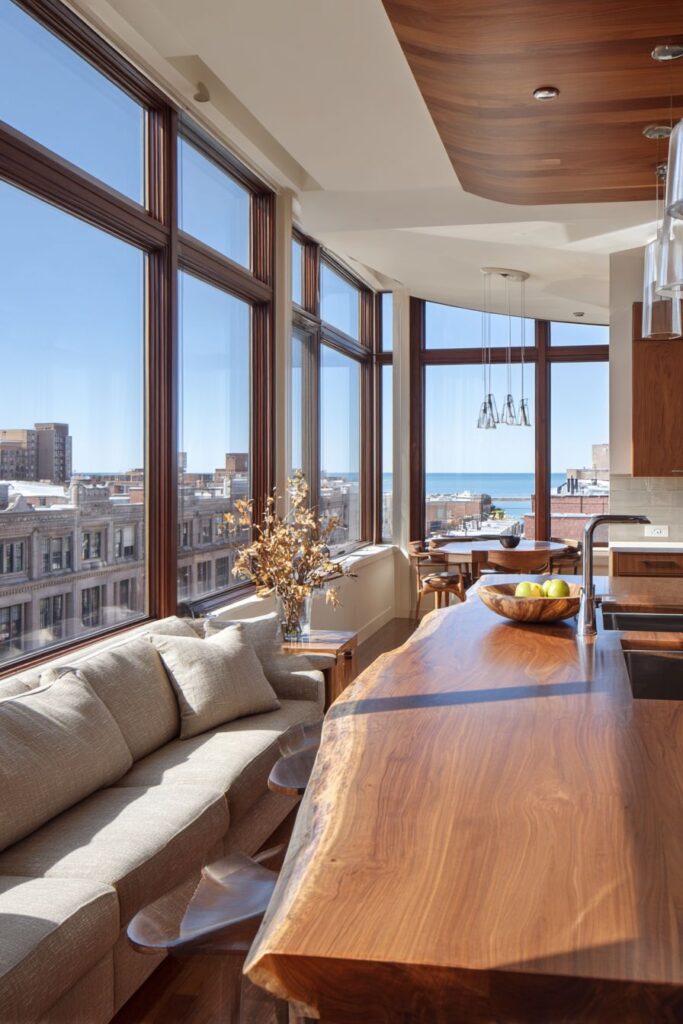
Large windows provide abundant natural light that highlights teak’s golden tones and natural oils, while pendant lights offer focused task illumination. The sophisticated simplicity of this design demonstrates how wood can be the foundation for cutting-edge contemporary kitchens that feel both current and enduring.
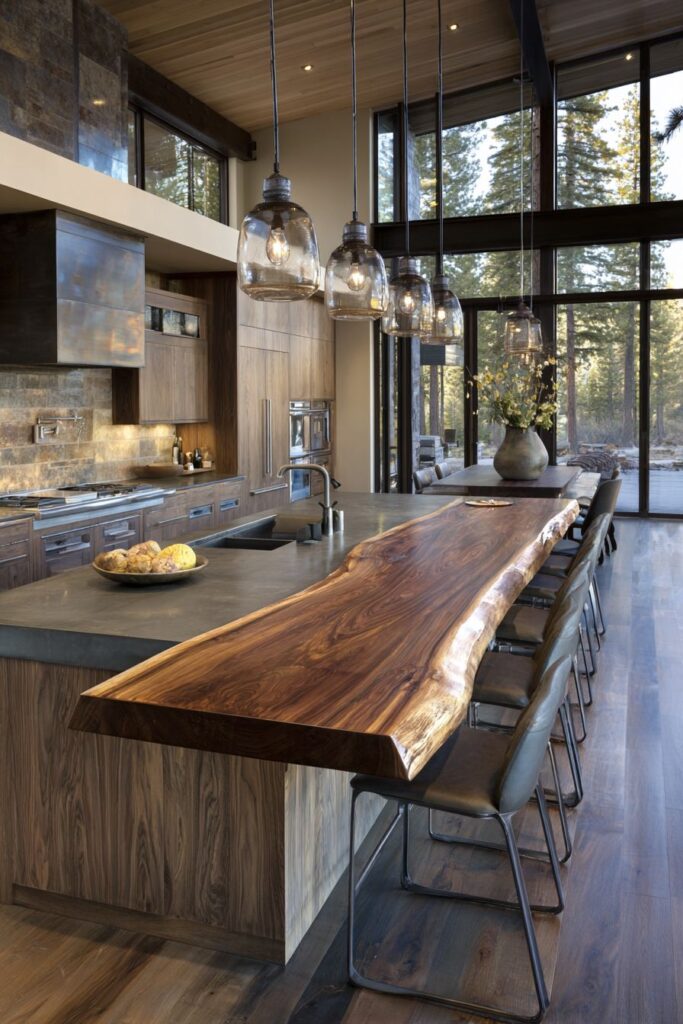
Key Design Tips:
- Use horizontal grain patterns to create visual width and movement
- Integrate handles for seamless contemporary appearance
- Combine structured elements with organic live-edge details
- Maximize natural light to showcase wood’s golden tones
- Maintain clean lines for sophisticated modern appeal
7. Transitional Mixed-Material Approach
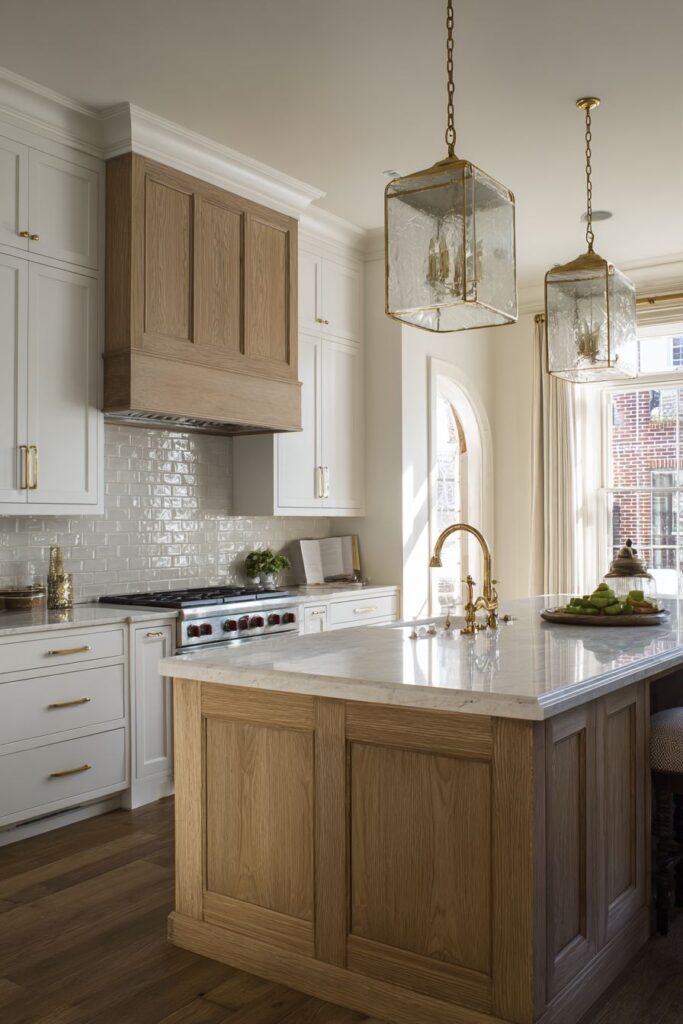
Perfect balance defines this transitional wood kitchen that successfully combines painted lower cabinets with natural wood upper cabinets in warm oak tones. This mixed-material approach creates visual interest while maintaining design harmony, allowing homeowners to enjoy both the clean appearance of painted cabinets and the natural warmth of wood grain.
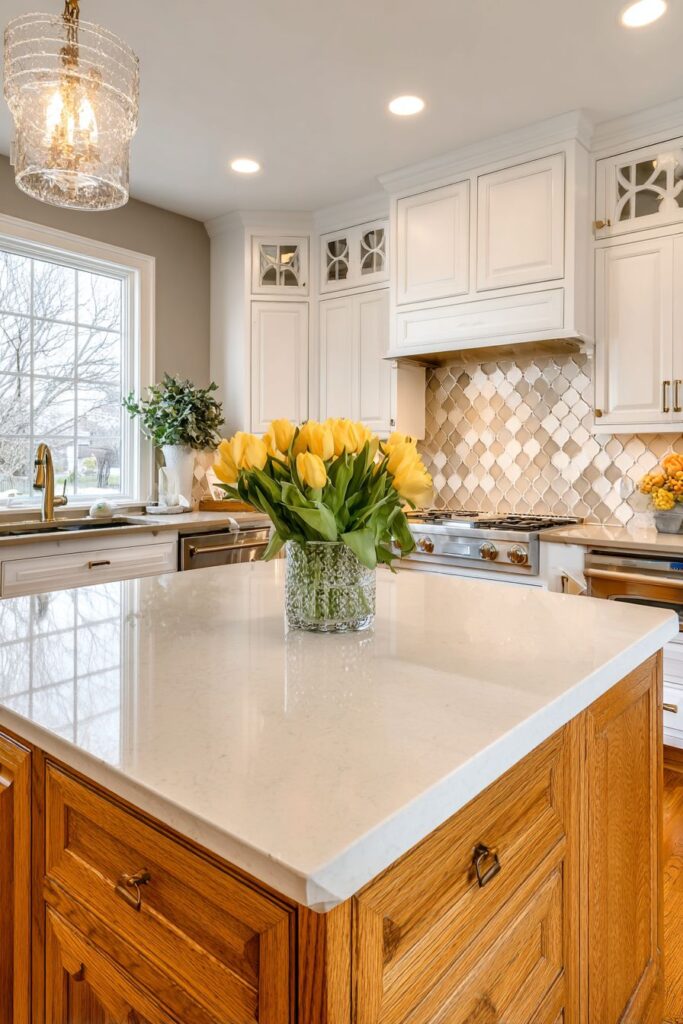
The kitchen island features this same balanced philosophy with a wooden base and quartz countertop, demonstrating how natural and engineered materials can complement each other beautifully. The warm wood tones ground the design while the painted elements keep it feeling fresh and current.
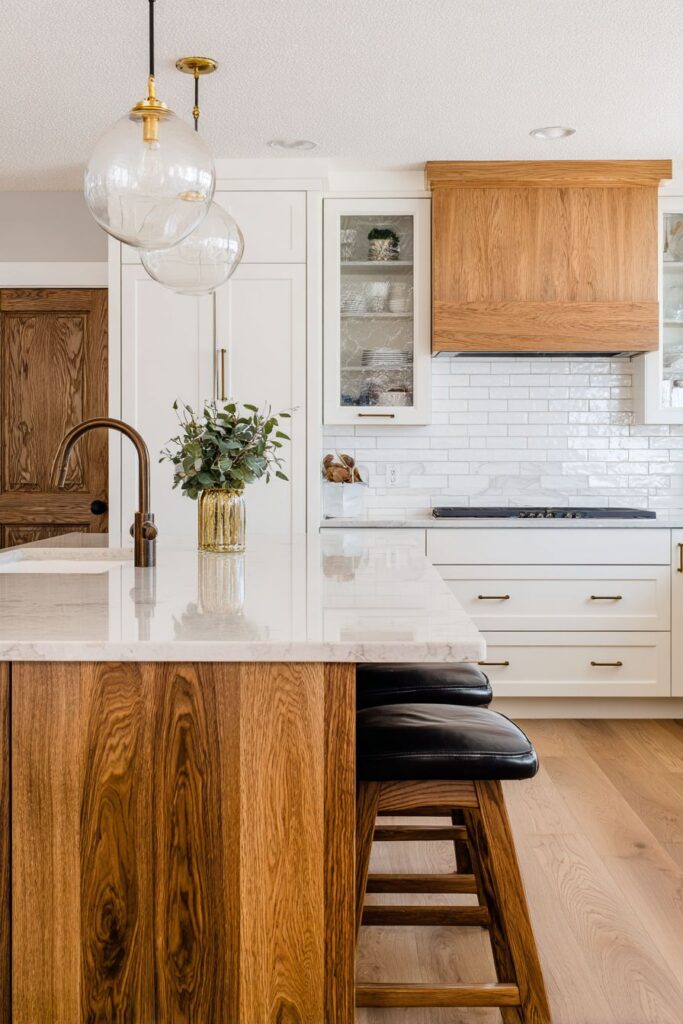
Brass fixtures and hardware create a unifying element that complements both the wood and painted surfaces, while classic subway tile backsplash adds timeless appeal. The soft natural lighting highlights the balance between different finishes, creating a kitchen that feels both traditional and contemporary.
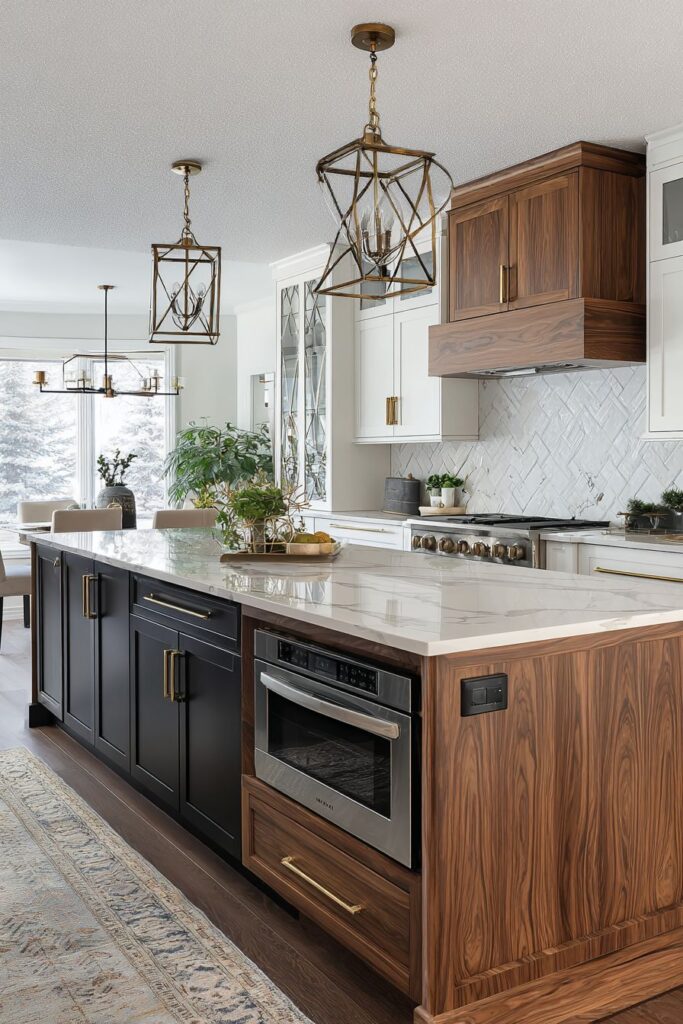
Key Design Tips:
- Mix painted and natural wood finishes for visual balance
- Use consistent hardware finishes to unify different materials
- Combine natural wood with engineered countertop materials
- Include classic elements like subway tile for timeless appeal
- Balance warm and cool tones throughout the design
8. Compact Golden Maple Efficiency
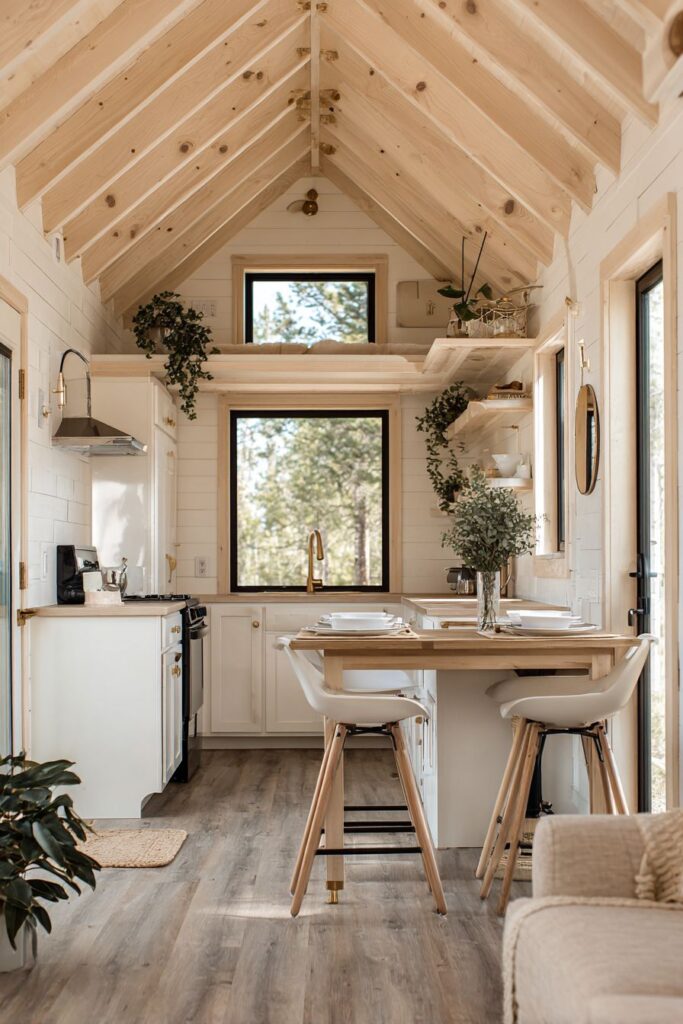
Smart design maximizes every square inch in this small wood kitchen featuring floor-to-ceiling maple cabinets in a beautiful golden finish. The vertical emphasis created by the full-height cabinetry makes the compact space feel larger and more grand, while the warm golden tones of maple create immediate coziness and invitation.
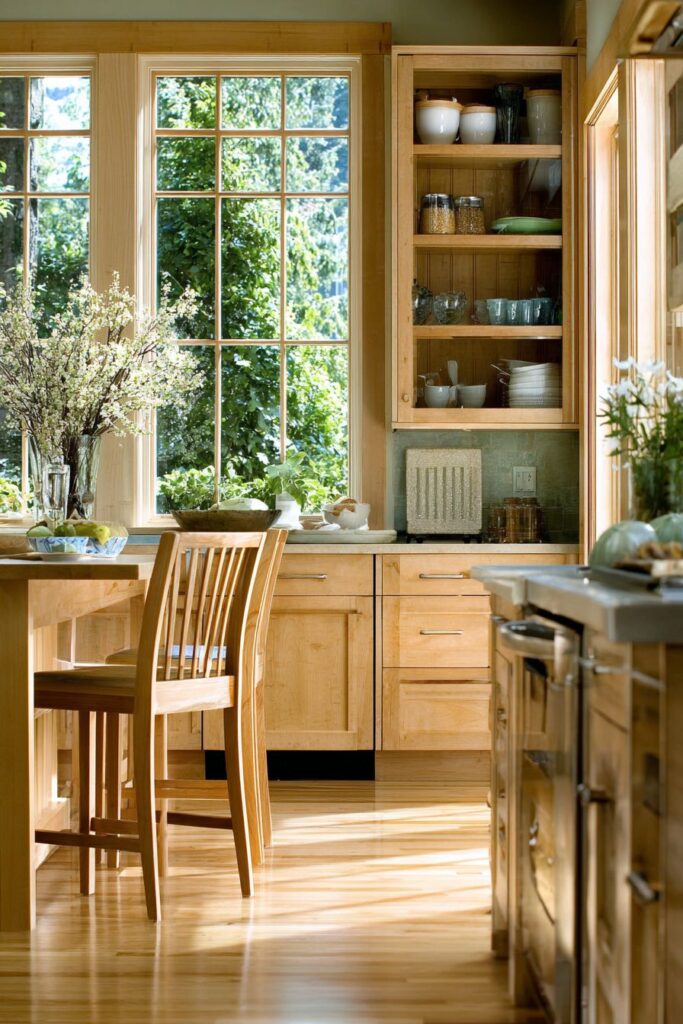
The efficient island includes abundant built-in storage and a wooden countertop that serves double duty as both prep space and casual dining area. This multi-functional approach is essential in smaller kitchens, and the warm wood tones ensure the space feels welcoming rather than cramped.
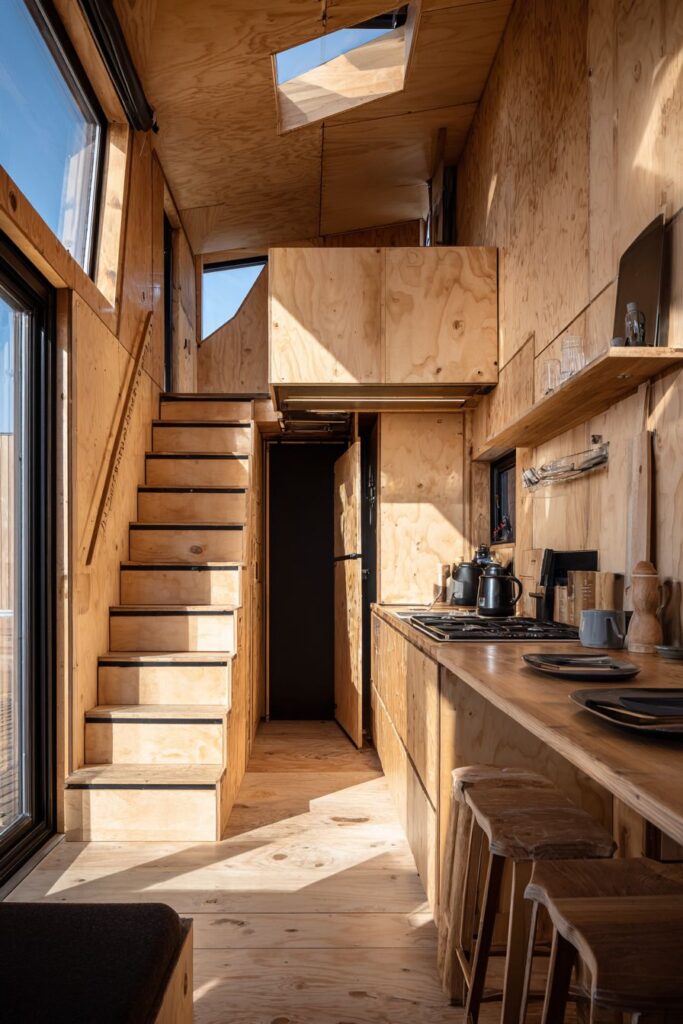
Natural light from a strategically placed corner window illuminates the warm wood tones throughout the space, creating the illusion of greater size while highlighting maple’s beautiful grain patterns. The golden coloring reflects light effectively, making the compact kitchen feel bright and cheerful despite its size limitations.
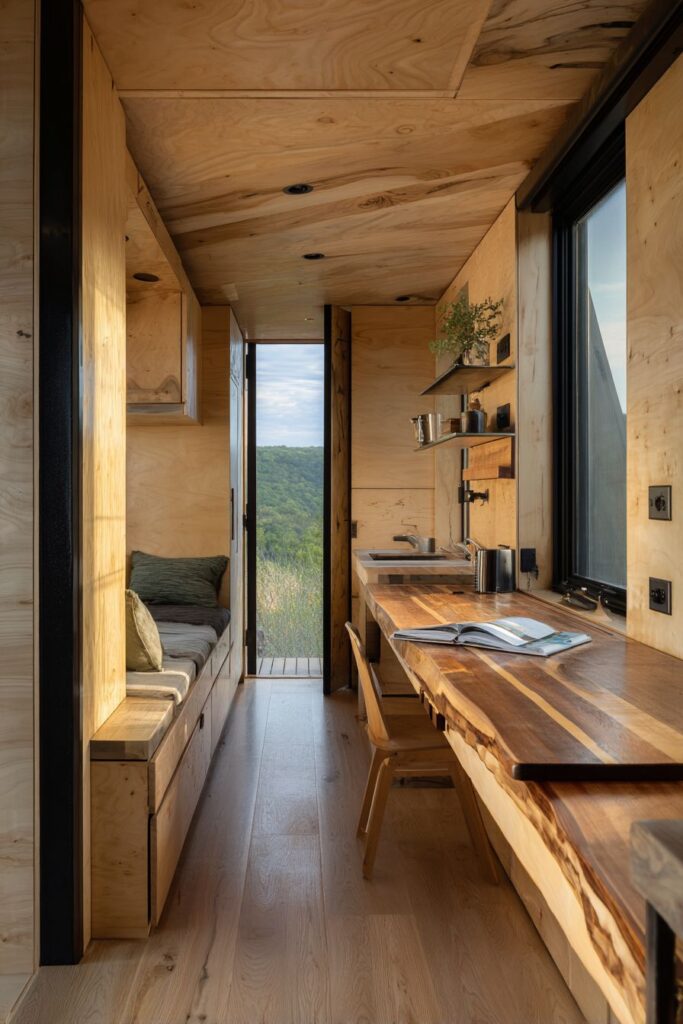
Key Design Tips:
- Use floor-to-ceiling cabinetry to maximize storage and visual height
- Create multi-functional islands for efficient space utilization
- Choose light-reflective wood tones to brighten small spaces
- Position windows strategically for maximum natural light impact
- Maintain consistent wood tones throughout for visual continuity
9. Mixed Wood Species Sophistication
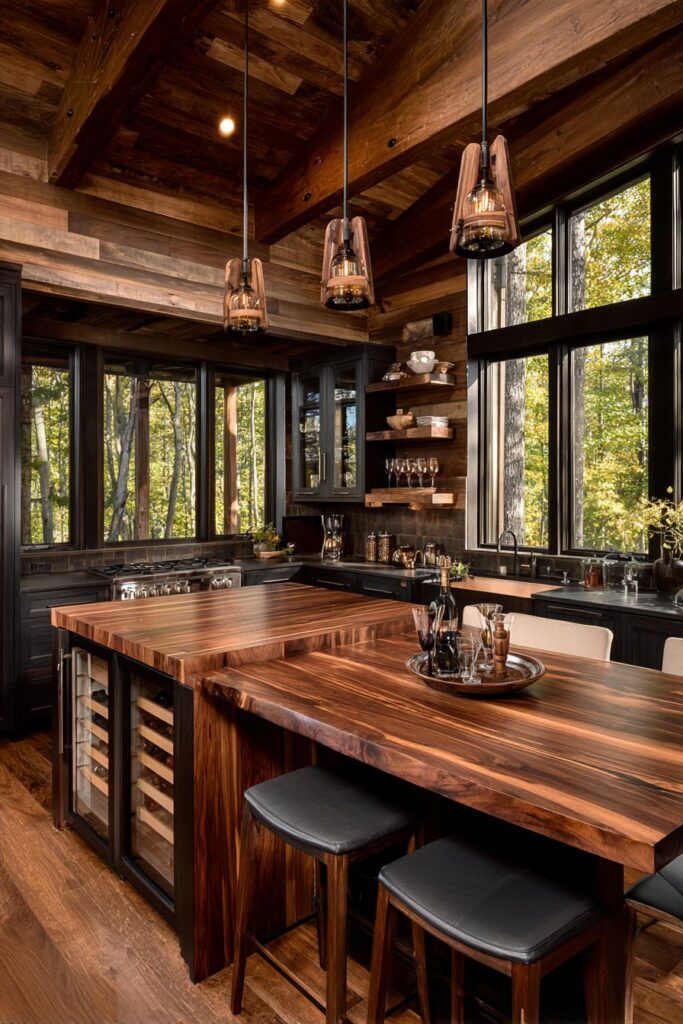
Visual sophistication reaches new levels in this wood kitchen featuring mixed wood species with walnut lower cabinets and maple upper cabinets creating stunning contrast and interest. The rich chocolate tones of the walnut base cabinets ground the design with dramatic depth, while the lighter maple uppers prevent the space from feeling too heavy or overwhelming.
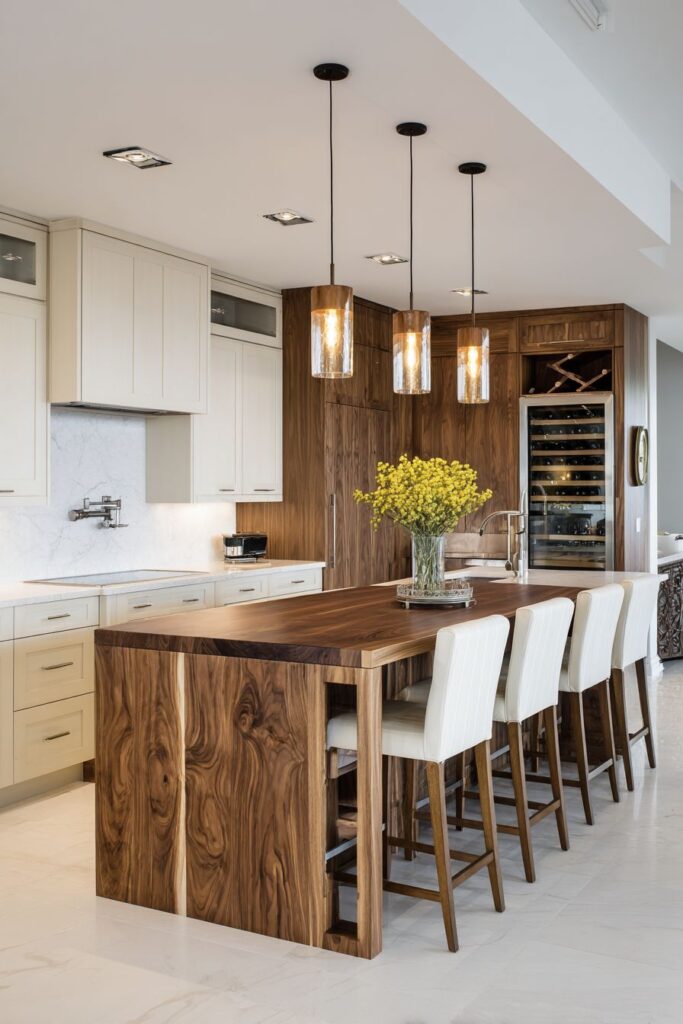
The impressive kitchen island showcases a thick butcher-block top with natural edge details and integrated wooden wine storage that demonstrates the functional beauty of well-planned wood elements. The varied wood tones create natural zoning within the space while maintaining overall design harmony through careful material selection.
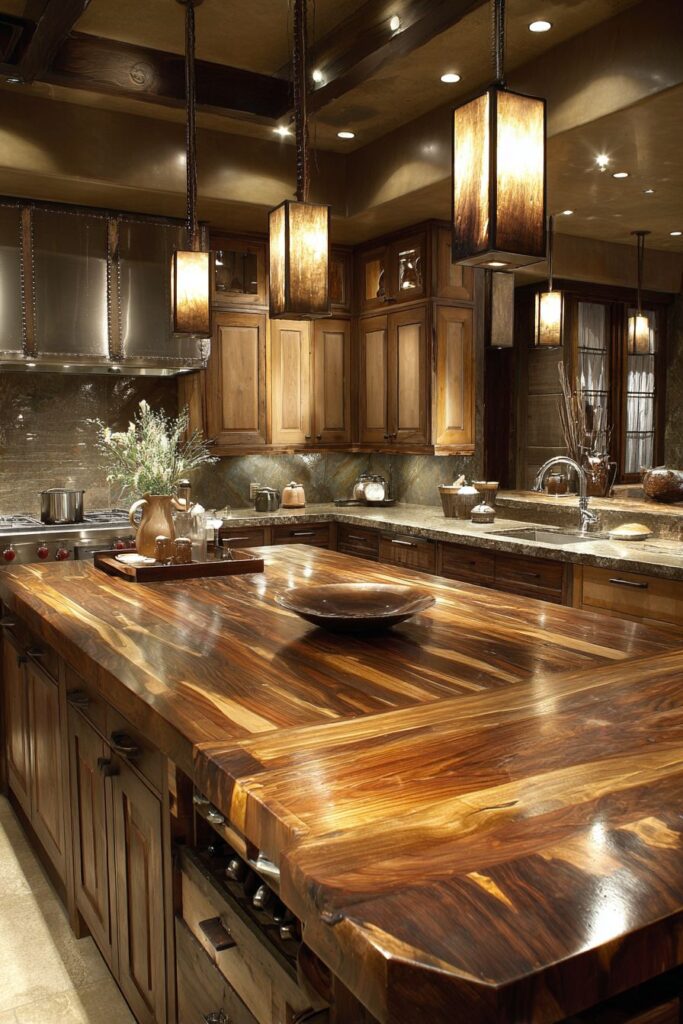
Pendant lighting with wooden accents ties the different wood species together, creating visual continuity despite the contrasting tones. The sophisticated use of different wood types proves that variety can enhance rather than compromise design unity when executed with skill and intention.
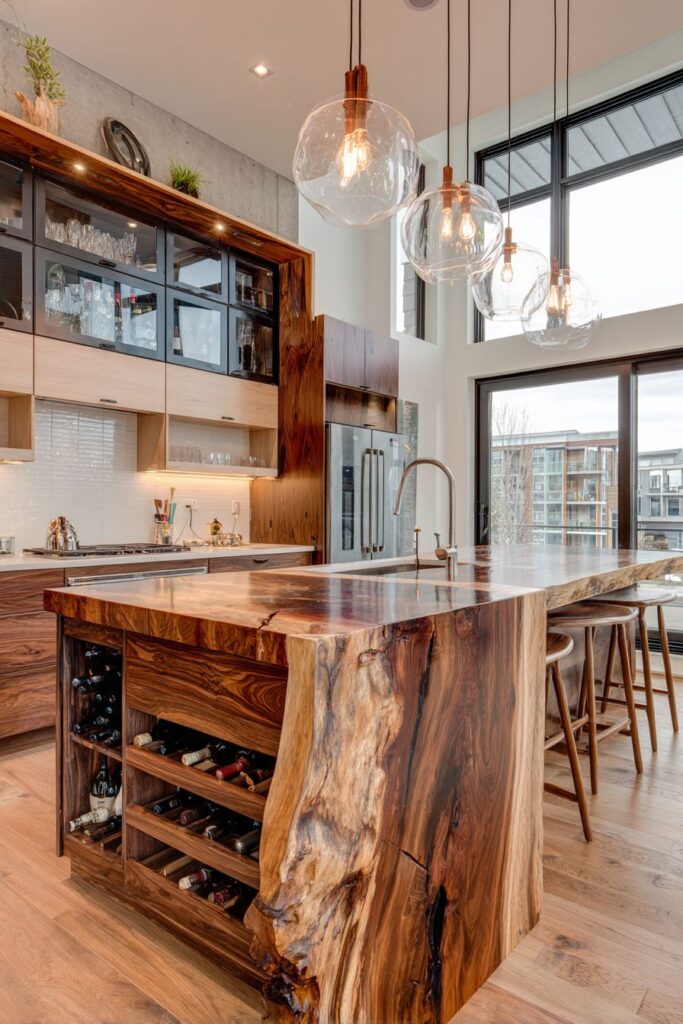
Key Design Tips:
- Balance dark and light wood species for visual interest
- Use natural edge details to add organic elements
- Integrate functional storage into island design
- Coordinate lighting fixtures with wood elements
- Maintain proportion balance between different wood tones
10. Farmhouse Distressed White Oak Charm
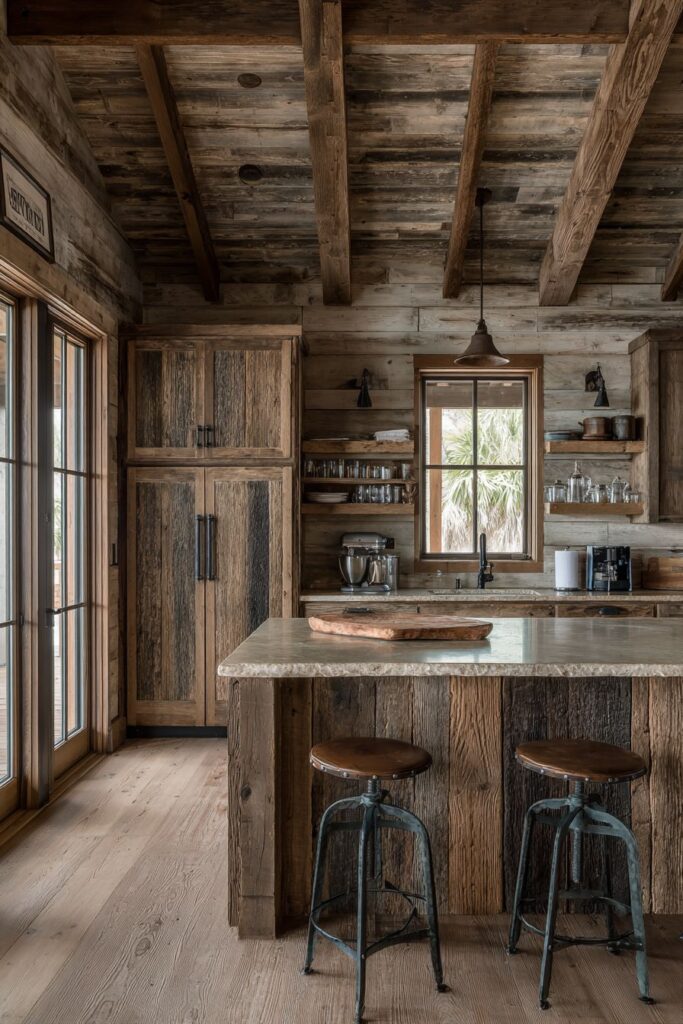
Authentic farmhouse charm radiates from this wood kitchen featuring distressed white oak cabinets that showcase natural wear patterns and character marks that tell stories of generations past. The weathered finish reveals the natural beauty of white oak’s distinctive grain while the distressed details add instant age and authenticity to the space.
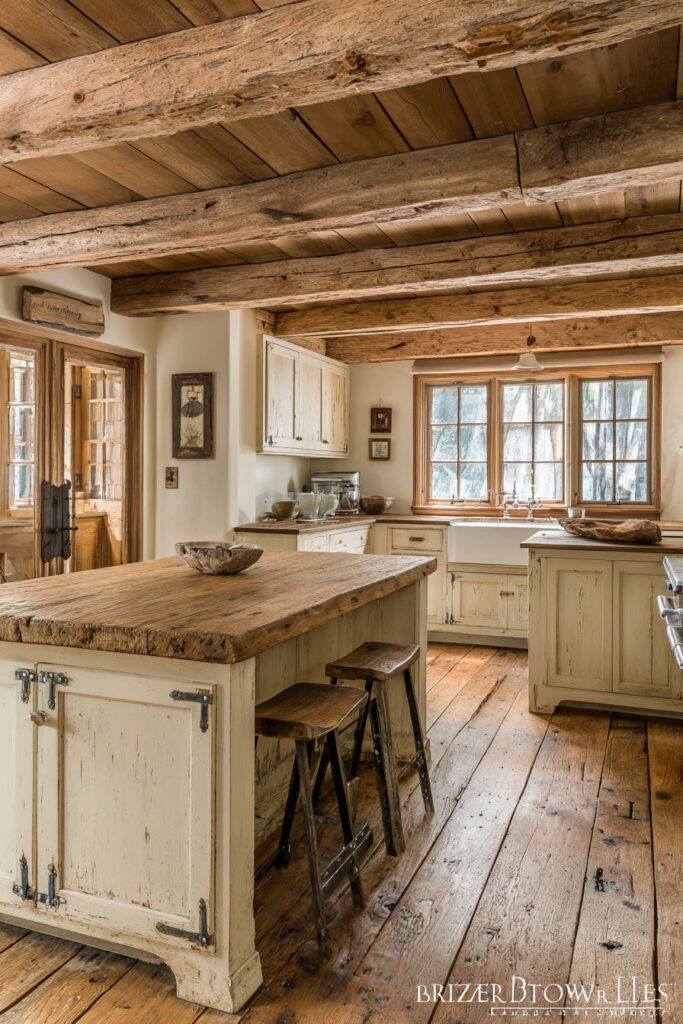
The kitchen island features a substantial reclaimed wood countertop supported by metal brackets and surrounded by industrial-style bar stools that create perfect farmhouse-industrial fusion. This combination of rustic wood elements with metal accents demonstrates how different materials can enhance each other when thoughtfully combined.
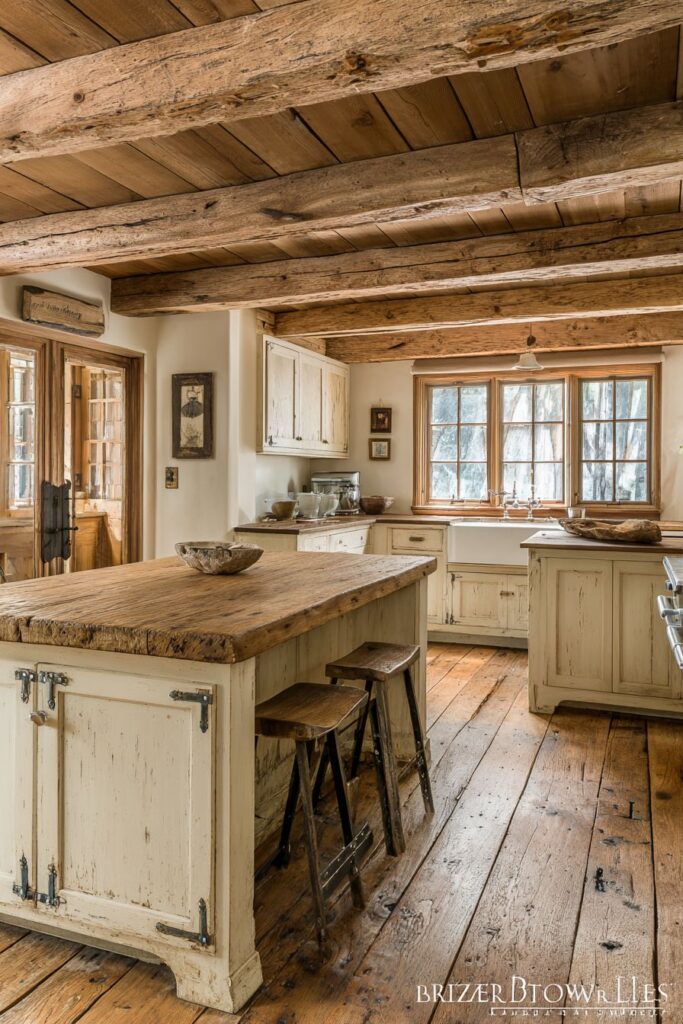
Exposed wooden ceiling beams add architectural drama and visual weight overhead, while vintage-style windows filter natural light that creates beautiful shadows and highlights throughout the weathered wood surfaces. The authentic farmhouse appeal comes from embracing imperfection and celebrating the natural aging process of wood.
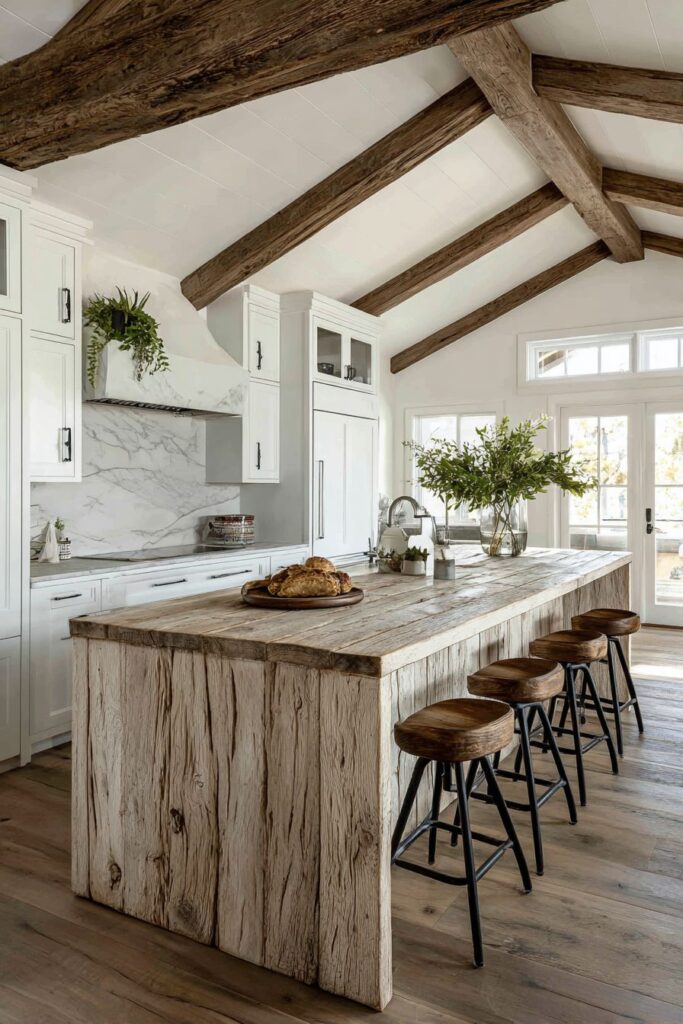
Key Design Tips:
- Choose distressed finishes for authentic farmhouse character
- Combine wood with metal elements for industrial farmhouse style
- Add exposed beams for architectural interest and scale
- Use vintage-style windows to enhance period authenticity
- Embrace natural wear patterns as design features
11. Custom Wooden Pantry Storage Excellence
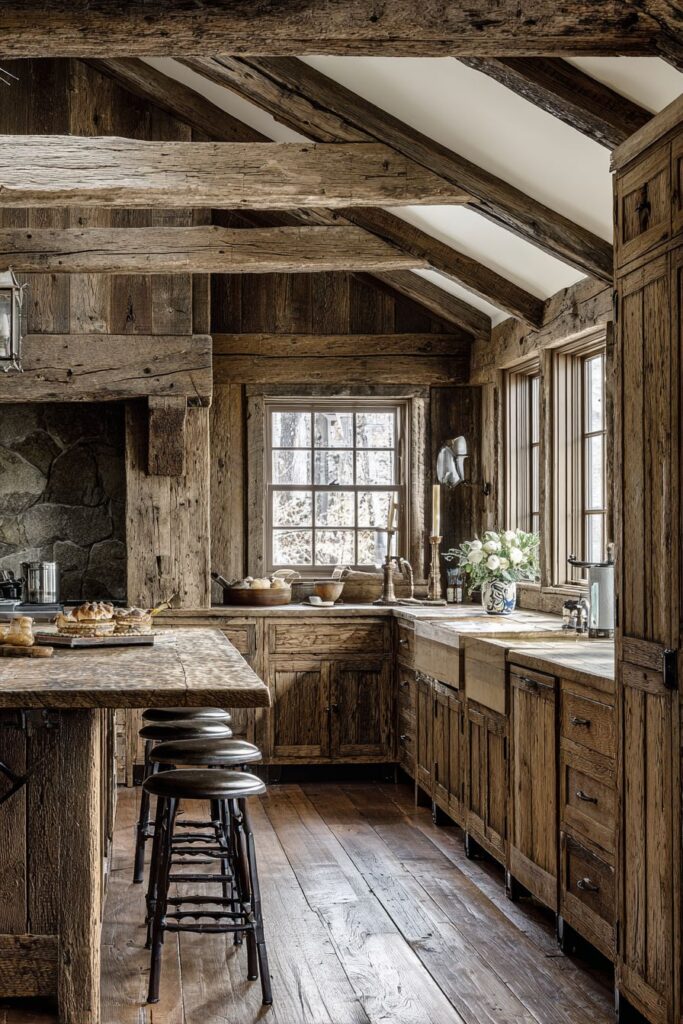
Organization meets beauty in this wood kitchen storage solution featuring custom-built wooden pantry cabinets with sophisticated pull-out drawers and adjustable shelving systems. The quarter-sawn oak construction showcases distinctive ray patterns that create visual interest while the natural finish highlights the wood’s inherent beauty and premium quality.
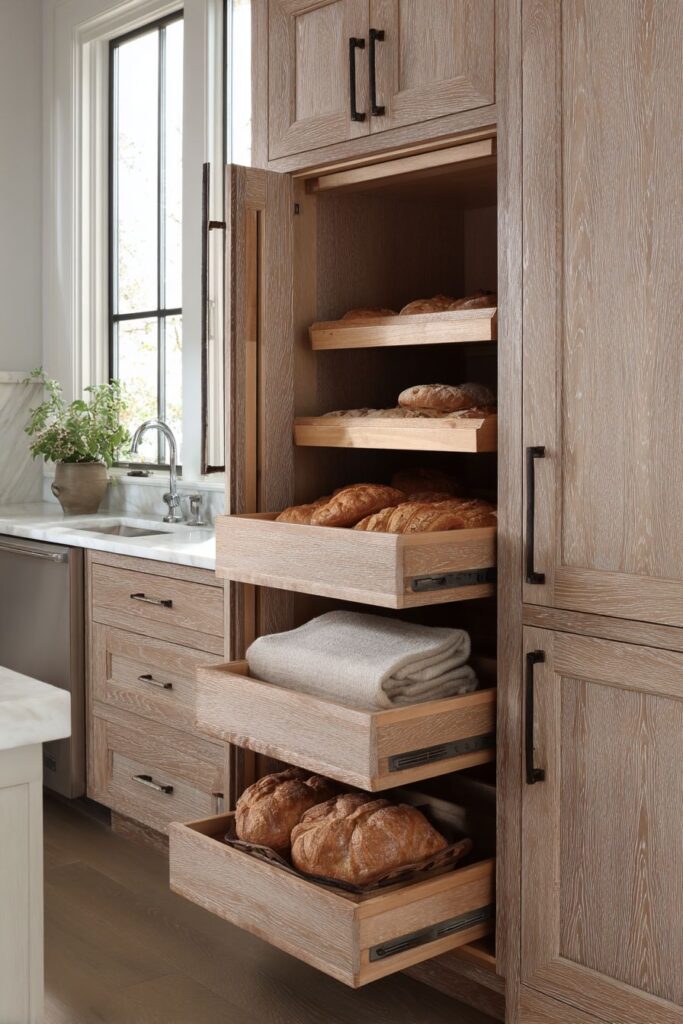
Integrated LED lighting illuminates the organized storage while dramatically highlighting the wood grain details and creating a warm, inviting glow within each cabinet compartment. The careful attention to both form and function demonstrates how storage solutions can be both practical and aesthetically pleasing when crafted from quality wood materials.

The precision craftsmanship evident in the dovetail joints, smooth-operating hardware, and perfect fit and finish elevates this storage system from mere functionality to furniture-grade beauty. Every detail reflects the superior quality that comes from custom woodworking and thoughtful design integration.
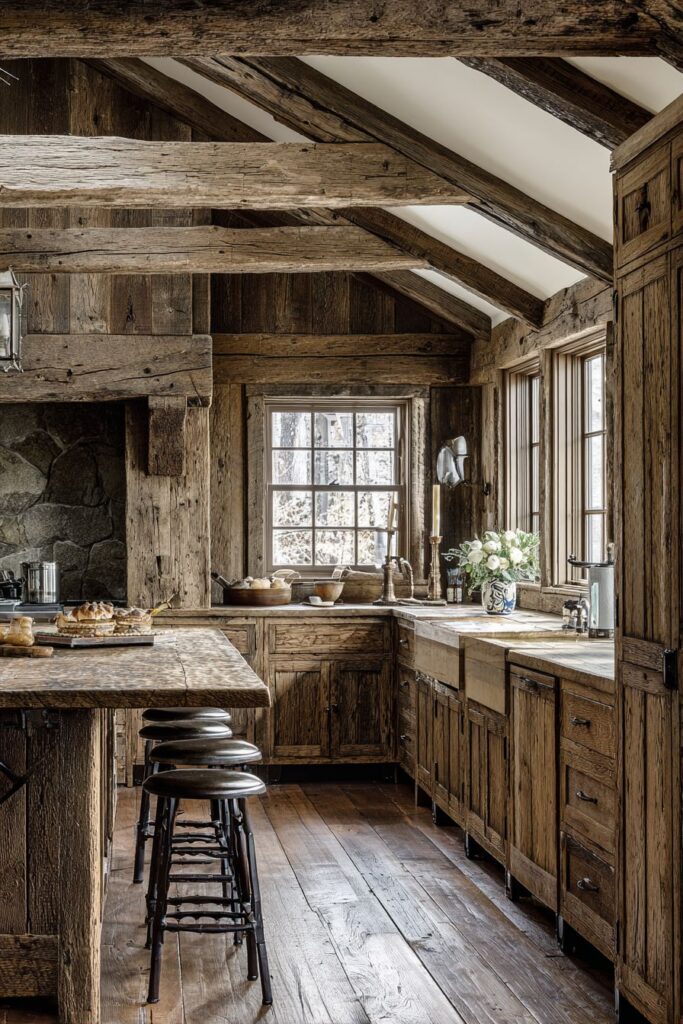
Key Design Tips:
- Choose quarter-sawn oak for distinctive grain patterns and stability
- Integrate LED lighting to highlight wood details and improve functionality
- Include pull-out drawers and adjustable shelving for maximum efficiency
- Focus on premium hardware for smooth operation and longevity
- Maintain furniture-grade finish standards for lasting beauty
12. Built-In Pine Breakfast Nook Comfort
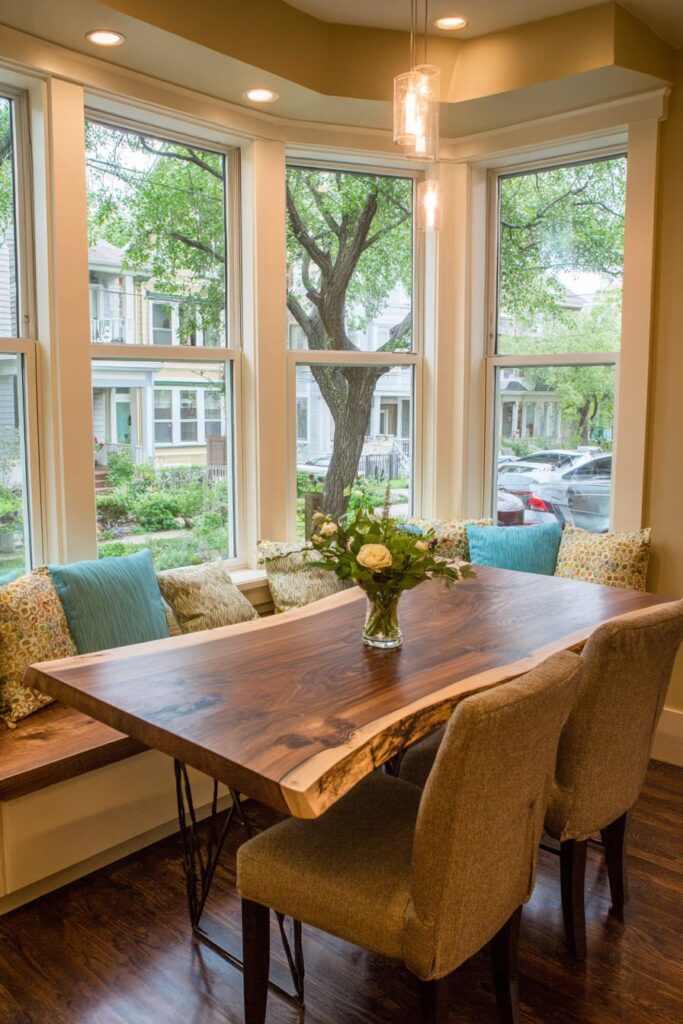
Cozy comfort defines this wood kitchen breakfast nook featuring built-in banquette seating crafted from solid pine with a natural finish that highlights the wood’s warm, honey-colored tones. The custom wooden bench seating maximizes space efficiency while creating an intimate dining environment that encourages family gatherings and leisurely meals.
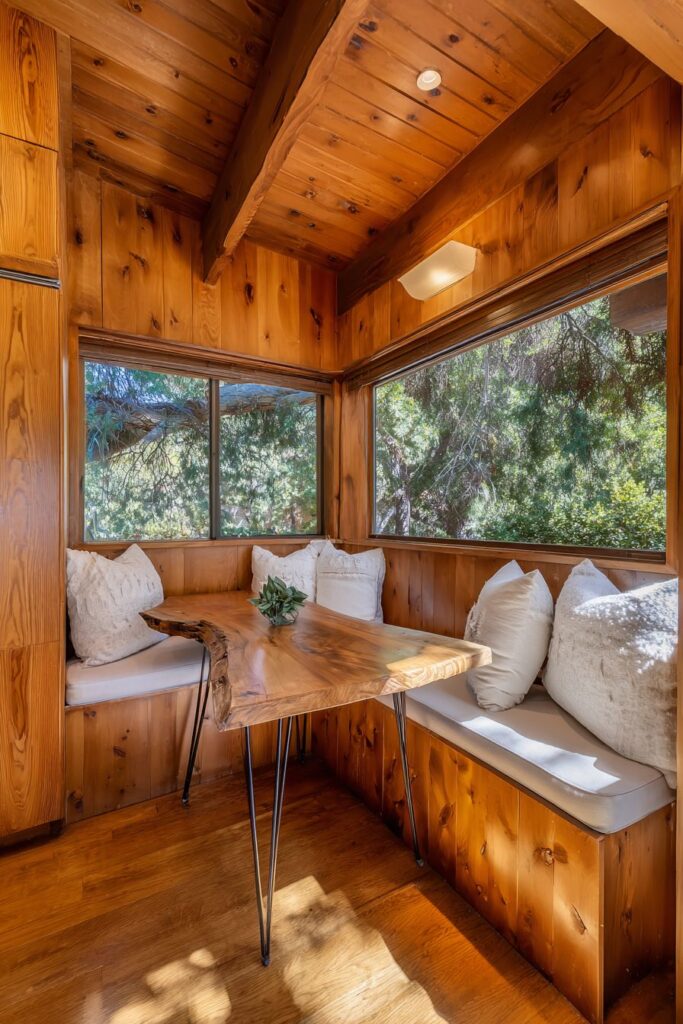
The centerpiece walnut table features a stunning live-edge top supported by sleek hairpin legs that create interesting contrast between organic natural forms and modern industrial elements. The combination of different wood species and design styles demonstrates how variety can enhance rather than complicate overall design harmony.
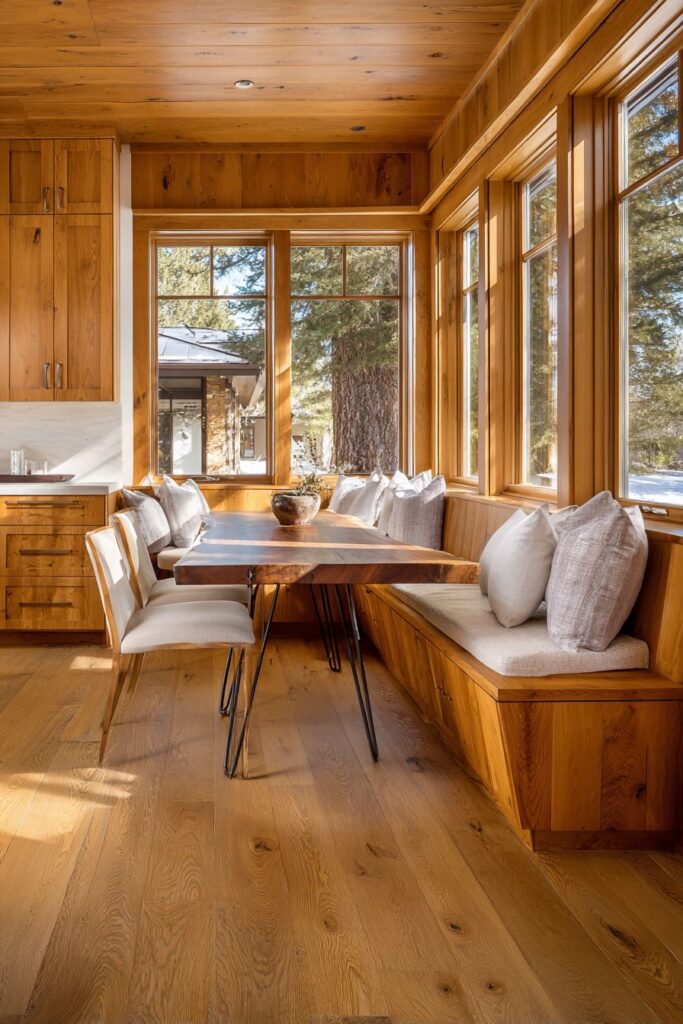
Natural light streaming through adjacent windows illuminates the varied wood tones while creating a bright, cheerful atmosphere perfect for morning coffee and casual dining. The intimate scale and warm wood textures make this functional eating area feel like a special retreat within the larger kitchen space.
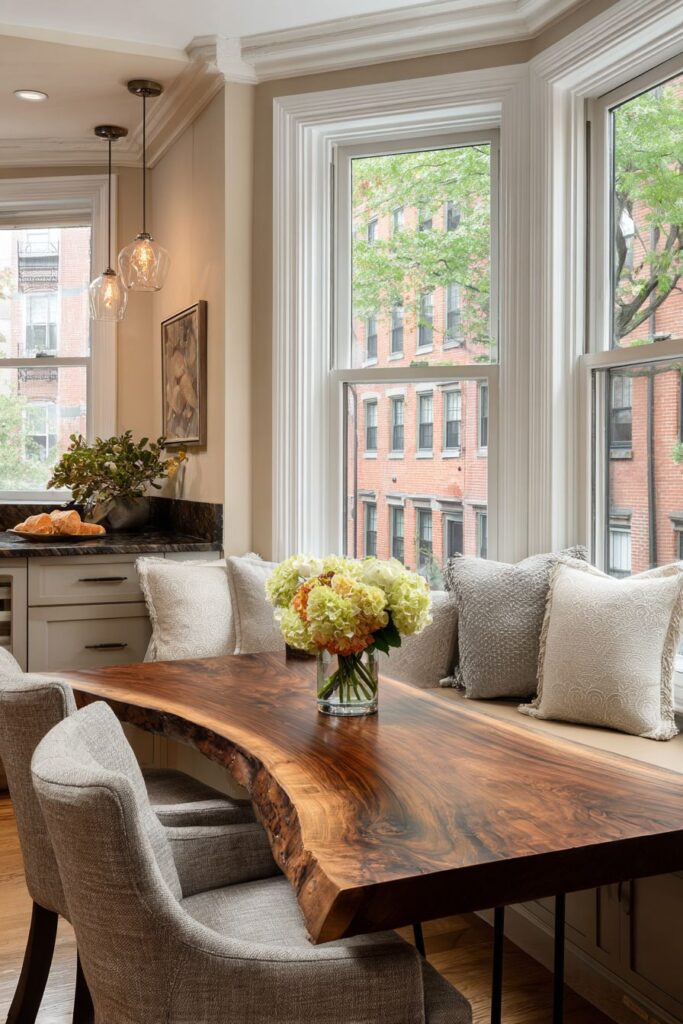
Key Design Tips:
- Use built-in seating to maximize space efficiency in breakfast nooks
- Combine different wood species for visual interest and contrast
- Mix organic live-edge elements with modern metal hardware
- Position seating near windows for optimal natural light
- Add cushions for comfort while maintaining wood element focus
13. Herringbone Reclaimed Wood Backsplash Art
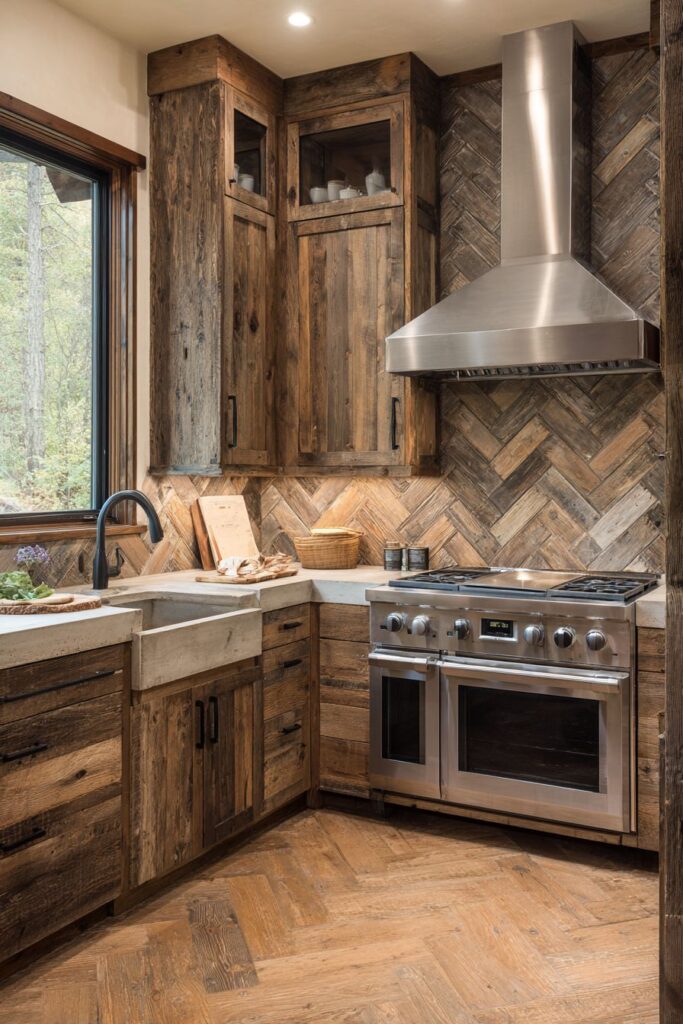
Stunning visual impact comes from this wood kitchen backsplash featuring reclaimed wood planks arranged in a sophisticated herringbone pattern with beautifully varied wood tones and authentic natural patina. The geometric arrangement transforms humble reclaimed materials into a work of art that serves as the kitchen’s dramatic focal point.
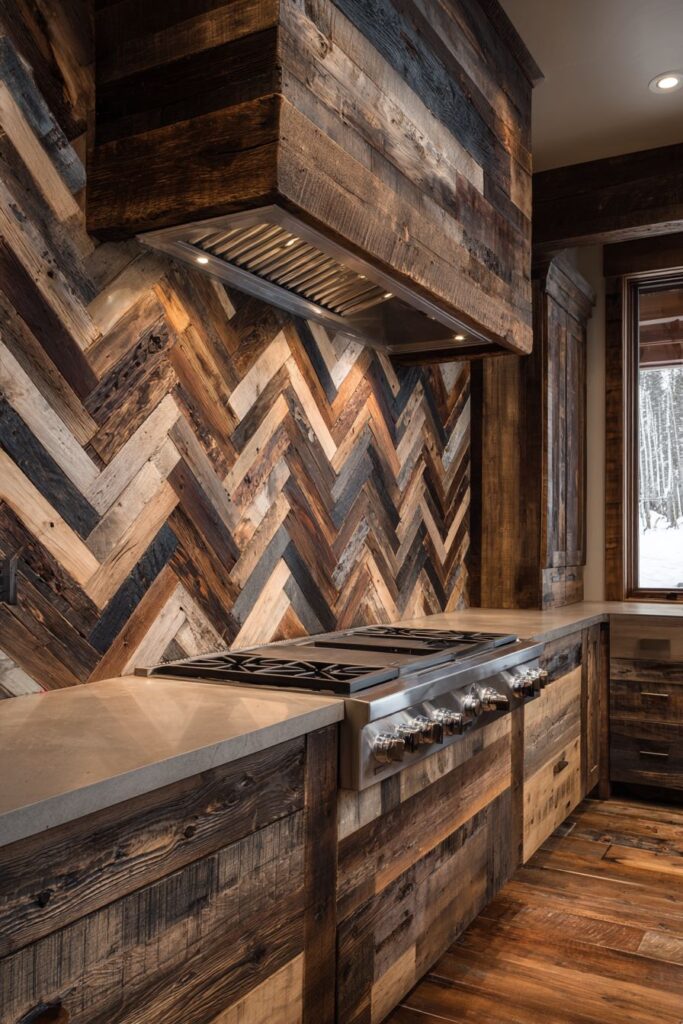
The surrounding cabinetry in matching reclaimed wood creates seamless design continuity while modern stainless steel appliances provide contemporary functionality and visual contrast. The combination of rustic materials with modern conveniences demonstrates how authentic elements can enhance rather than compromise contemporary living.

Under-cabinet lighting specifically highlights the textural details of the wooden backsplash while natural window light adds warmth and reveals the subtle color variations within each plank. The unique wood grain patterns and authentic character of the reclaimed materials create visual interest that changes throughout the day as lighting conditions shift.
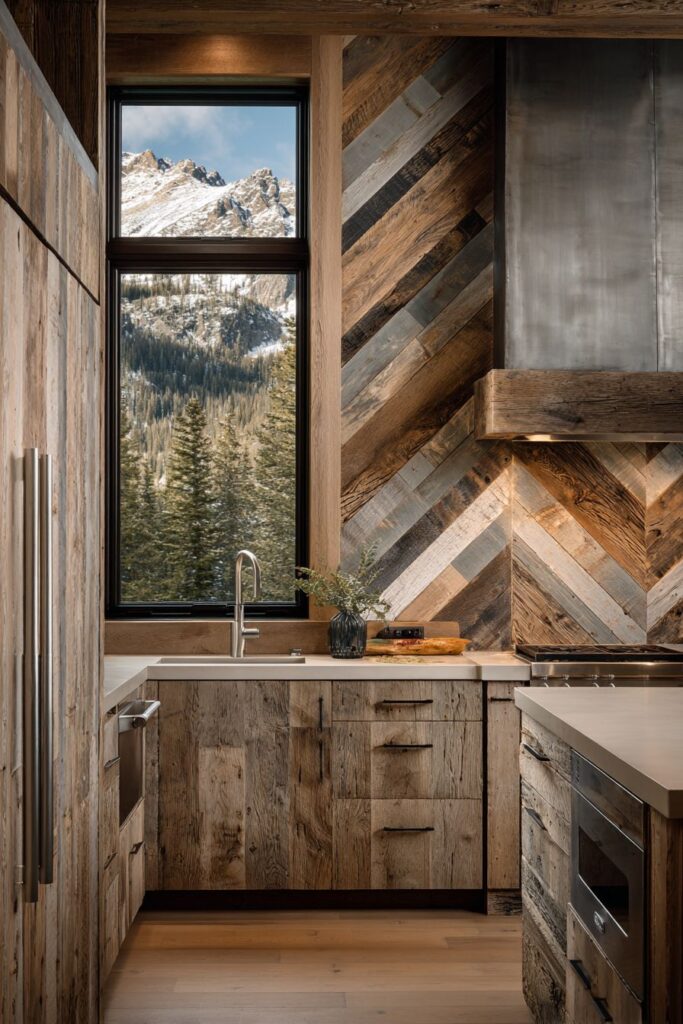
Key Design Tips:
- Arrange reclaimed wood in geometric patterns for sophisticated impact
- Match backsplash wood to surrounding cabinetry for design unity
- Use under-cabinet lighting to highlight wood texture and grain details
- Balance rustic wood elements with modern appliances and fixtures
- Embrace natural color variations as part of the design appeal
14. Live-Edge Walnut Floating Shelves Drama
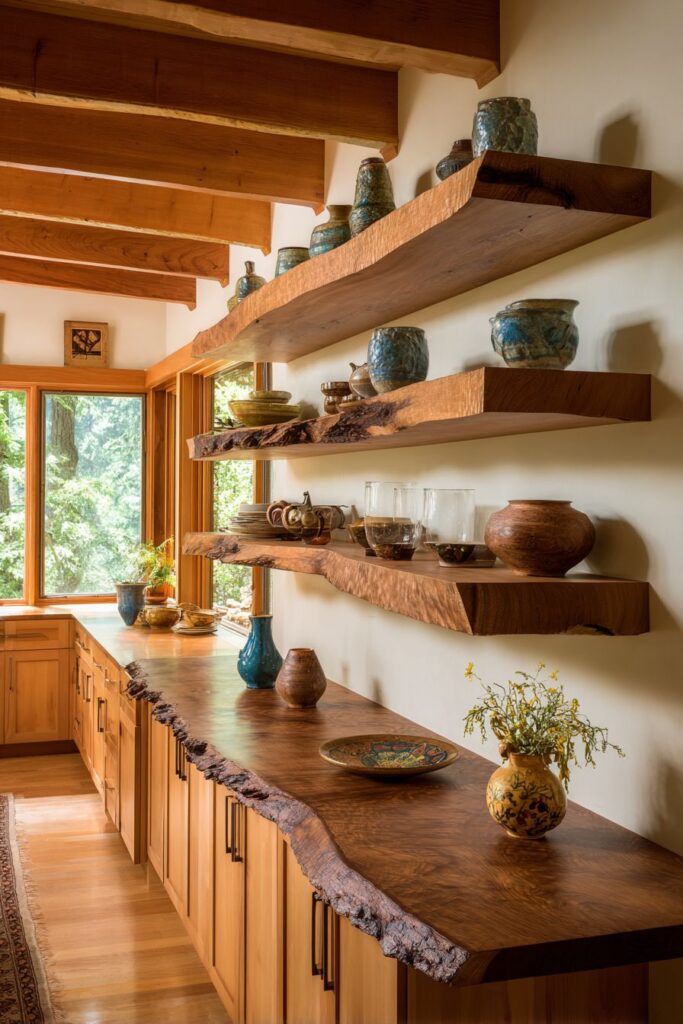
Dramatic impact comes from thick floating wooden shelves crafted from live-edge walnut slabs that showcase the natural edge character and rich, complex grain patterns. These substantial shelves serve both functional and artistic purposes, displaying pottery and glassware while creating stunning visual anchors that draw the eye upward and add architectural interest to the space.
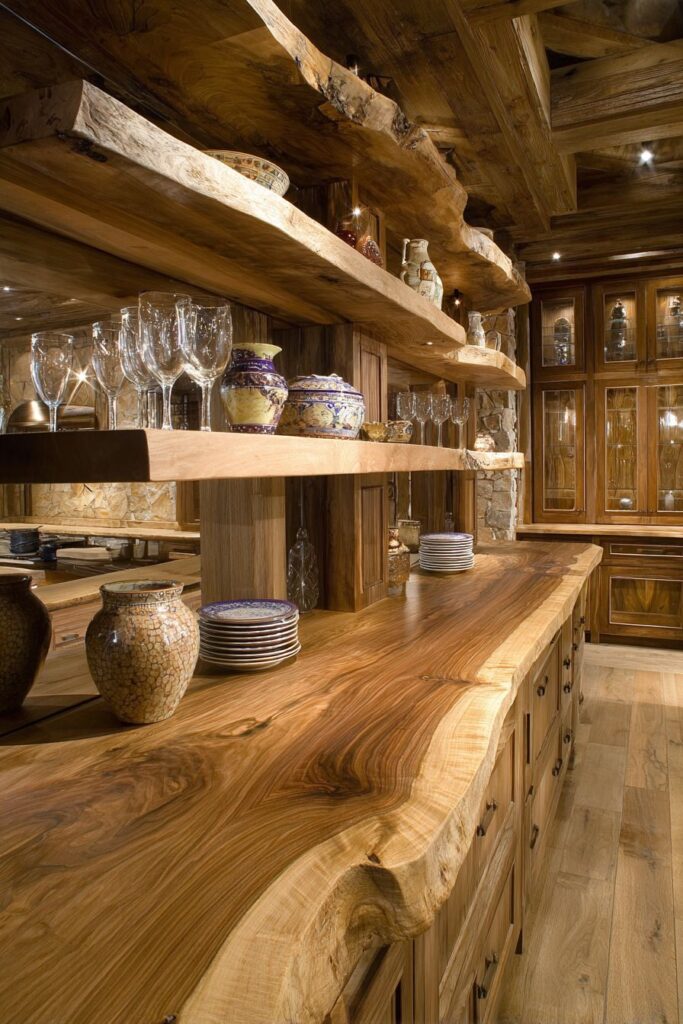
The surrounding kitchen features complementary wood cabinetry in lighter oak tones that provide perfect contrast to the dark walnut shelves while maintaining overall design harmony. The interplay between light and dark wood species creates natural zoning and visual depth that makes the kitchen feel larger and more dynamic.
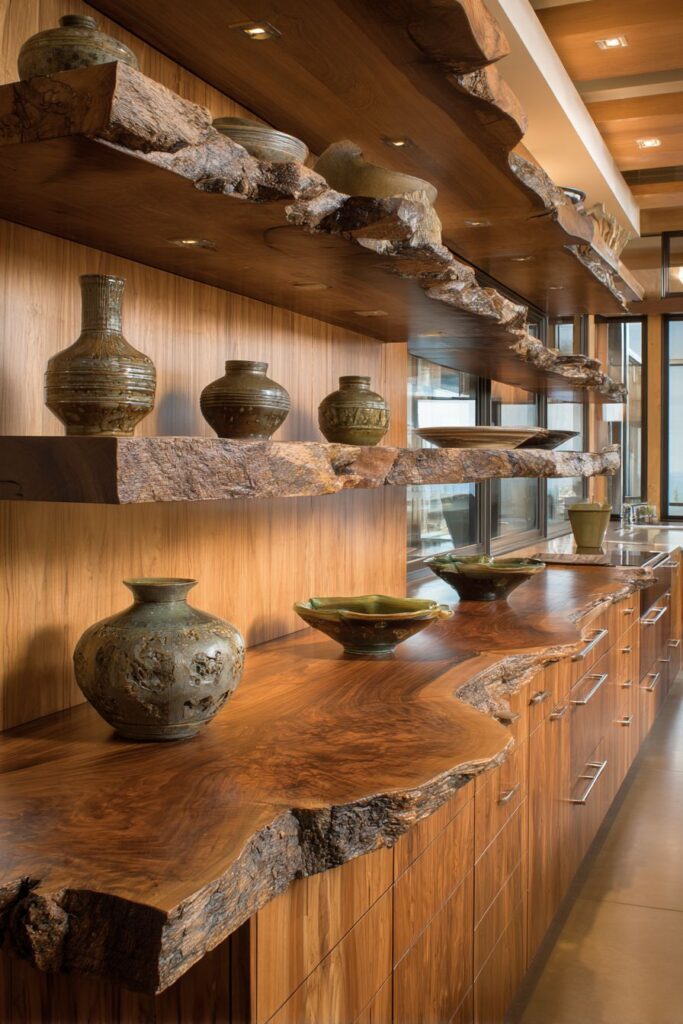
Multiple natural lighting sources create depth and dimension while highlighting the dramatic contrast between different wood species and their unique characteristics. The live-edge details preserve the organic beauty of the original tree while the floating installation creates clean, contemporary lines that bridge rustic and modern aesthetics.
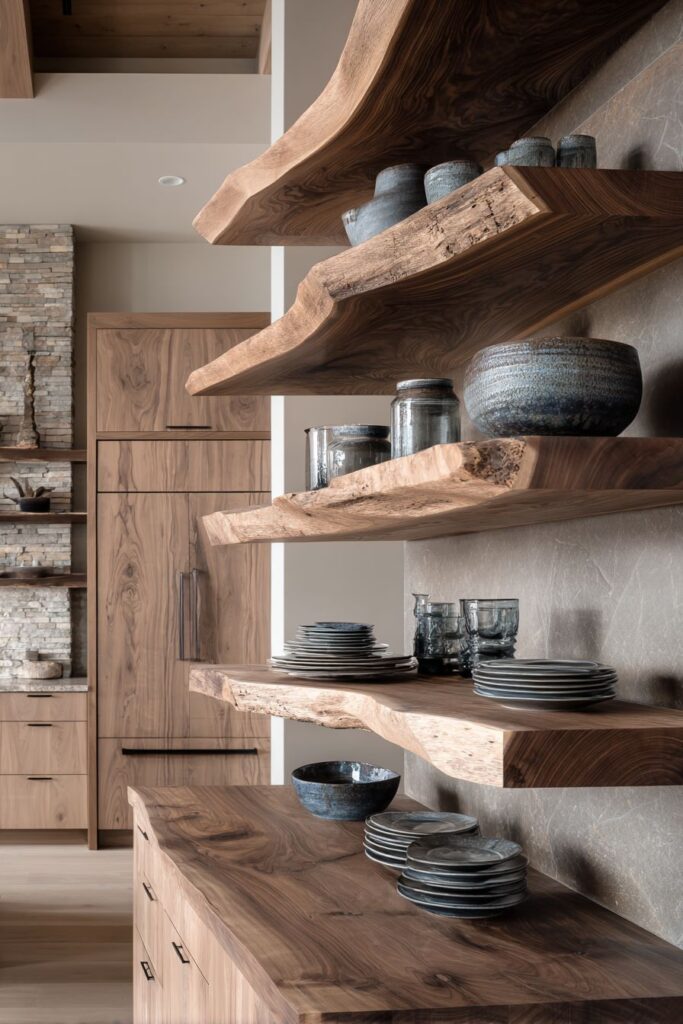
Key Design Tips:
- Use live-edge slabs for dramatic natural character and visual impact
- Contrast dark and light wood species for enhanced visual interest
- Install floating shelves to maintain clean contemporary lines
- Display pottery and glassware to highlight functional beauty
- Layer multiple light sources to reveal wood grain variations
15. Cedar Range Hood Architectural Statement
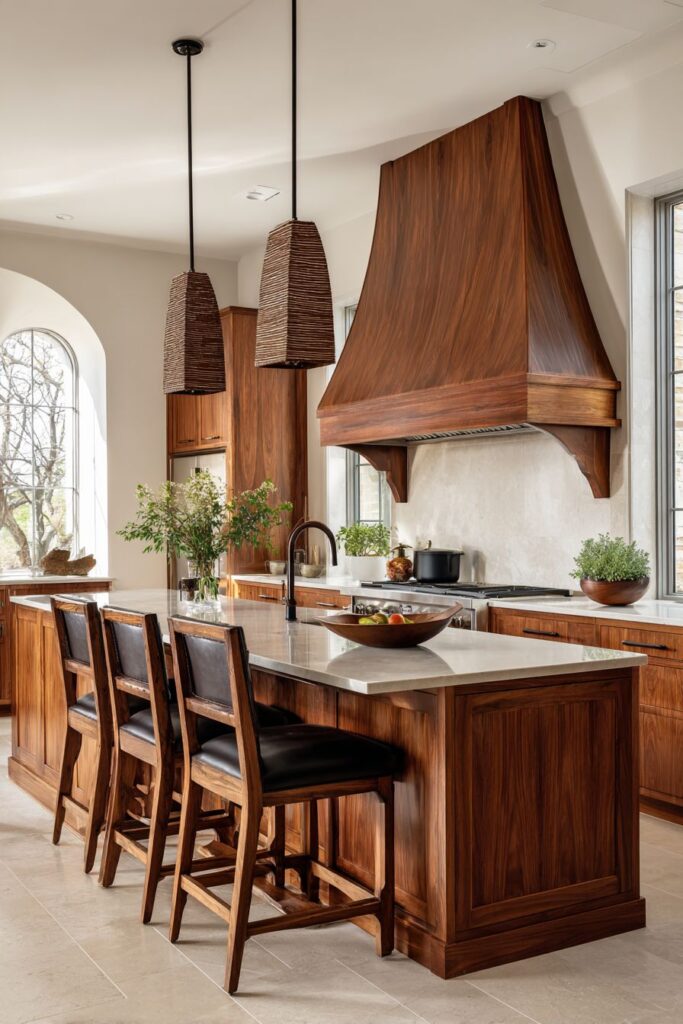
Commanding presence defines this wood kitchen featuring a dramatic wooden range hood crafted from solid cedar with natural finish and traditional corbel details that create stunning architectural impact. The substantial scale and classic proportions make this custom element the undisputed focal point while demonstrating wood’s versatility in creating both functional and decorative kitchen features.
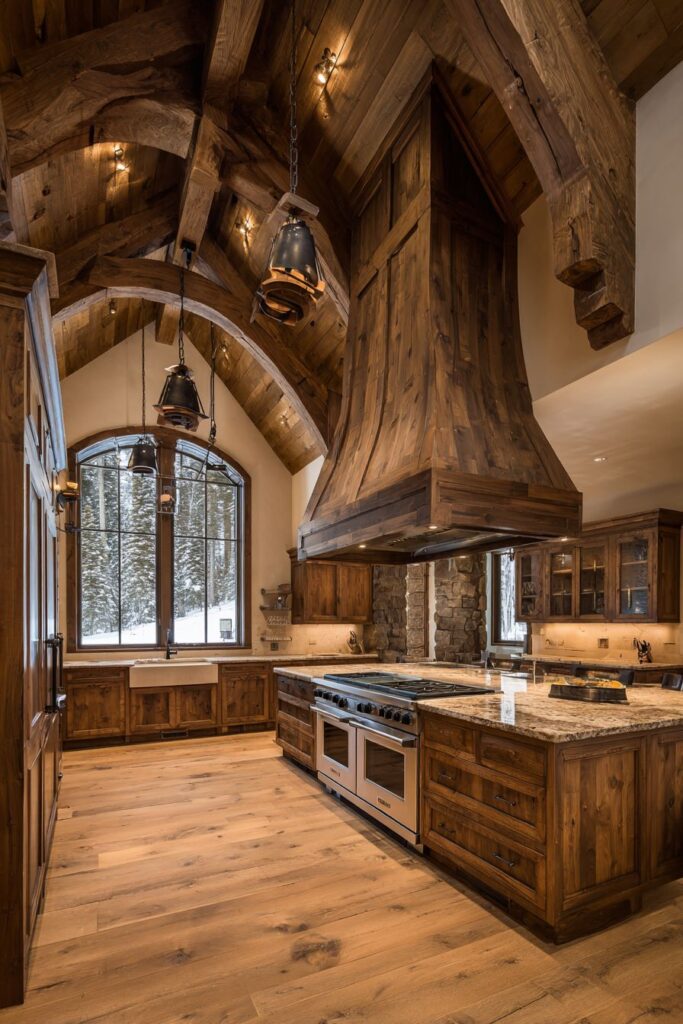
The surrounding cabinetry in perfectly matched wood tones creates seamless design integration while stainless steel appliances provide necessary modern functionality and visual contrast. The careful balance between traditional woodworking craftsmanship and contemporary conveniences shows how classic elements can enhance modern living.
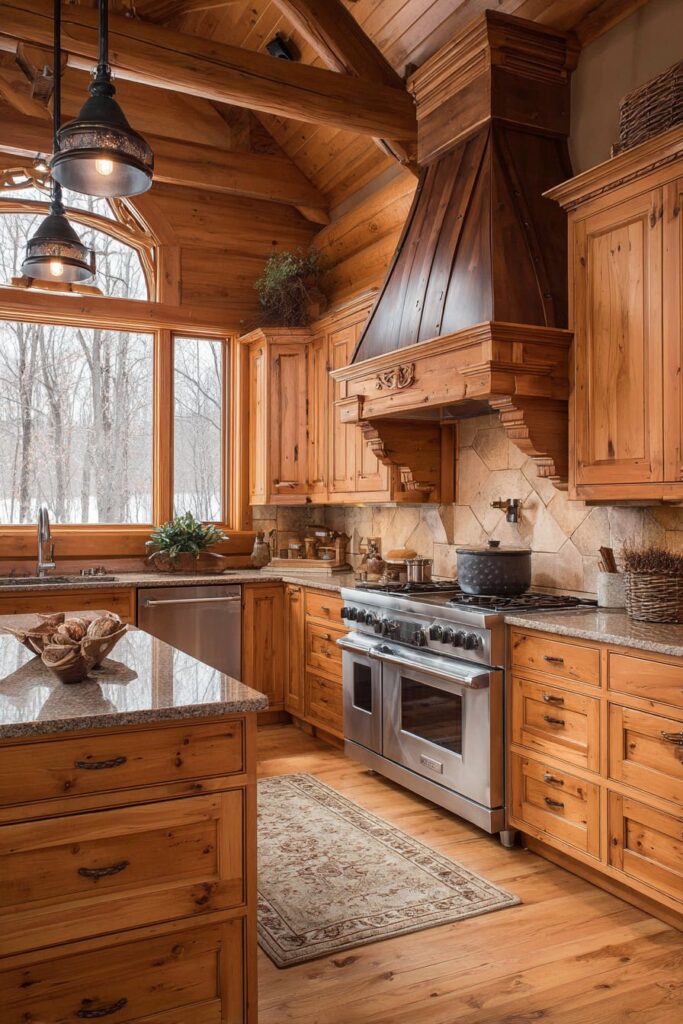
Strategic lighting from multiple sources illuminates the wooden range hood as a true statement piece while natural light from side windows adds warmth and reveals the cedar’s beautiful grain patterns and natural coloring. The architectural scale and superior craftsmanship elevate this functional element to furniture-grade beauty.
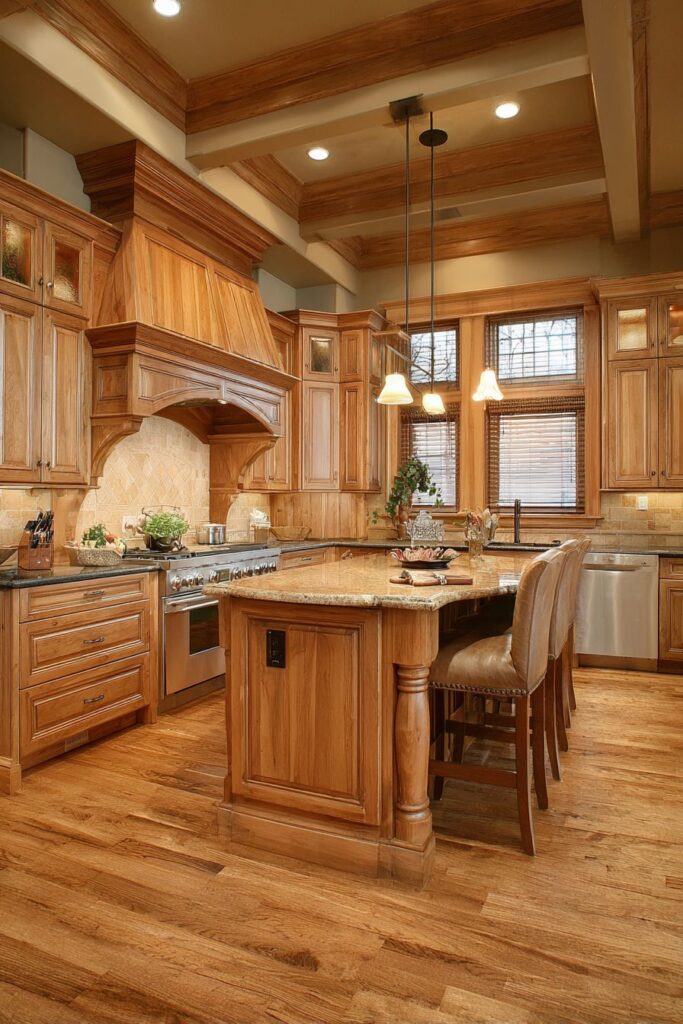
Key Design Tips:
- Create dramatic scale with substantial wooden range hood construction
- Match surrounding cabinetry wood tones for seamless integration
- Add traditional corbel details for classic architectural character
- Balance wood elements with modern stainless steel appliances
- Use strategic lighting to highlight custom woodwork craftsmanship
16. Integrated Maple Breakfast Bar Functionality
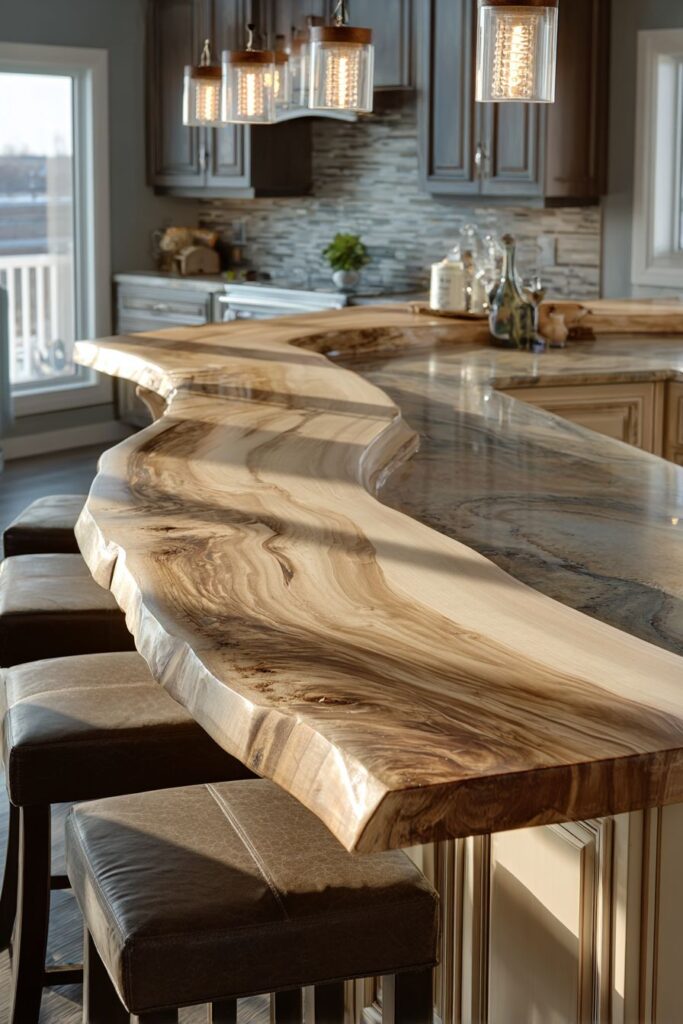
Social functionality meets beautiful design in this wood kitchen island featuring integrated wooden seating with a gracefully curved breakfast bar crafted from solid maple with natural edge details. The flowing curves create visual movement while the natural edge preserves organic character that softens the structured cabinetry lines.
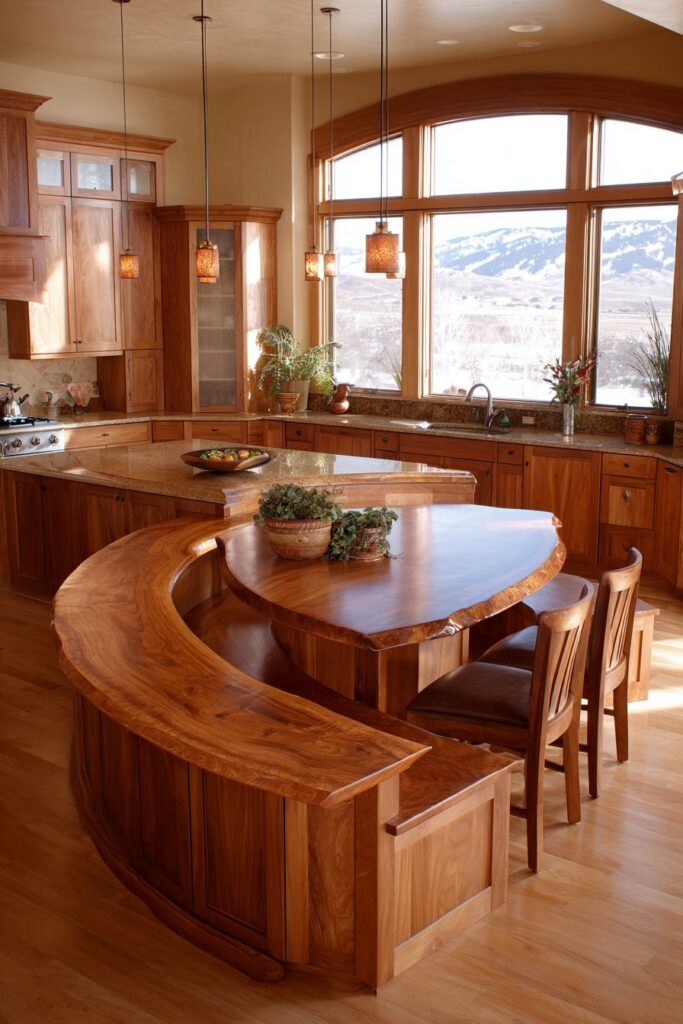
The island base showcases traditional raised panel doors in matching maple with classic hardware that demonstrates timeless woodworking techniques and attention to detail. The consistent use of maple throughout creates design unity while the varied applications – from flat countertop to curved breakfast bar – showcase the wood’s versatility.
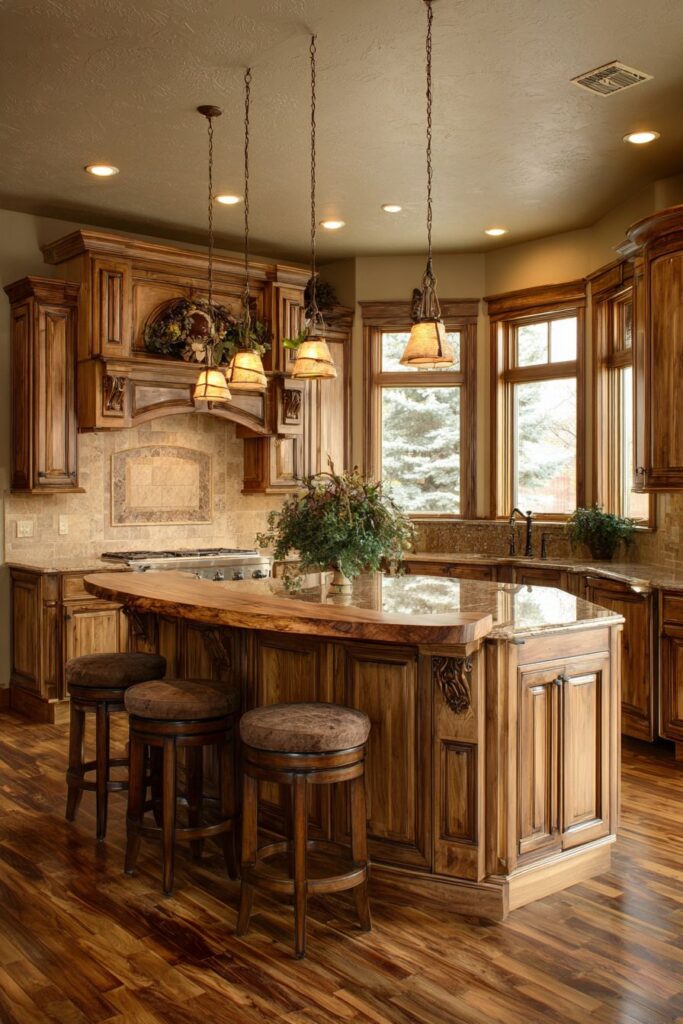
Pendant lights with complementary wooden accents hang strategically above the seating area while natural light highlights the maple’s grain patterns and warm coloring. The seamless integration of seating, storage, and workspace demonstrates how thoughtful design can maximize both function and beauty in kitchen islands.
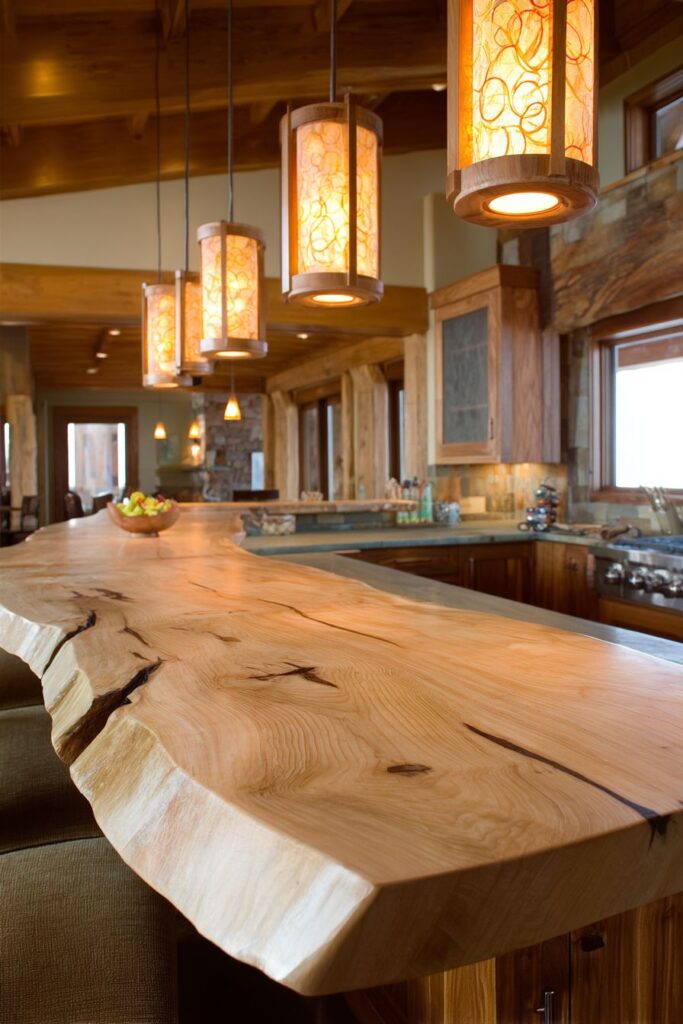
Key Design Tips:
- Create curved breakfast bars for visual movement and social function
- Use consistent wood species throughout island design for unity
- Integrate seating to maximize space efficiency and social interaction
- Add natural edge details to soften structured cabinetry lines
- Coordinate pendant lighting with wood elements for design continuity
17. Cedar Wainscoting Modern Sophistication
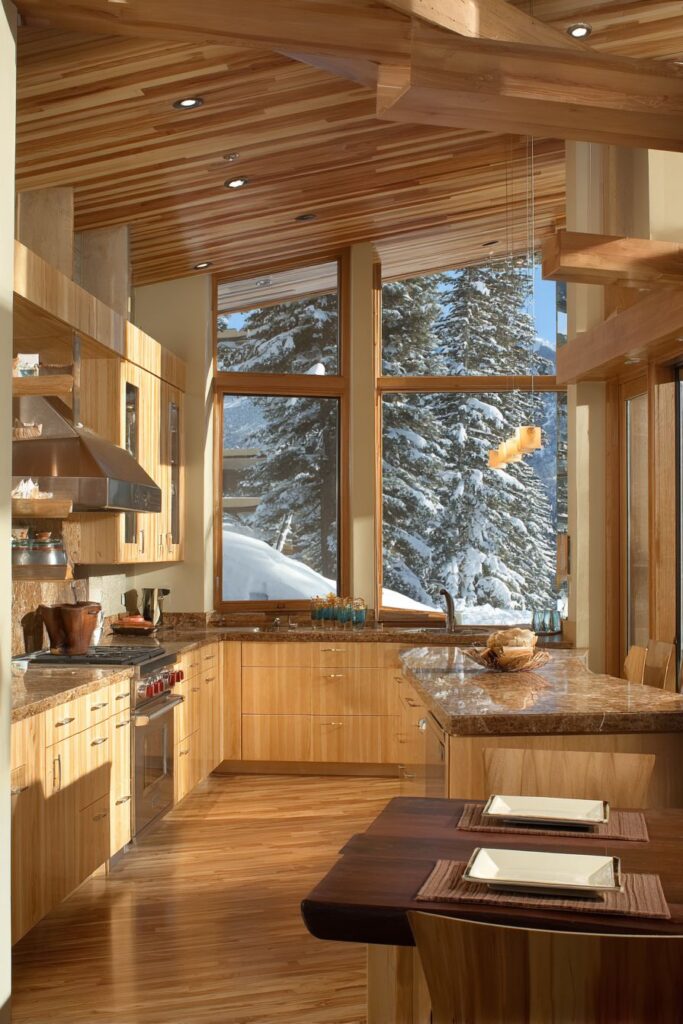
Contemporary sophistication emerges from this modern wood kitchen featuring horizontal cedar siding as wainscoting with clear protective finish that highlights the wood’s natural beauty and distinctive grain patterns. The horizontal orientation creates strong linear movement that makes the kitchen appear wider while the natural cedar coloring adds warmth and organic character.
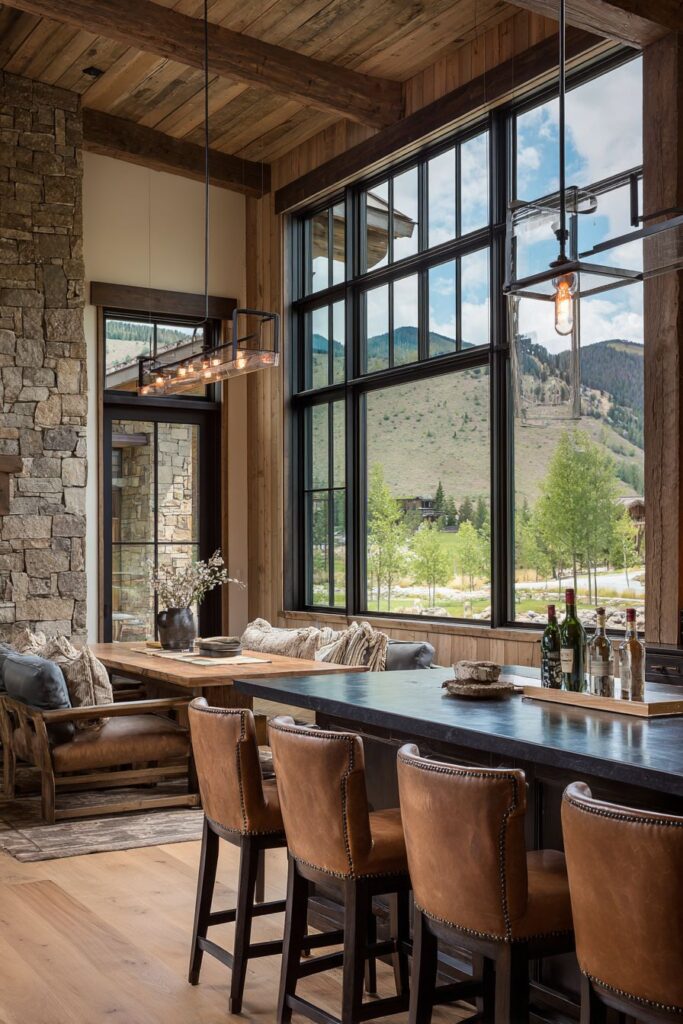
The upper cabinets in perfectly matched wood create seamless visual continuity from floor to ceiling while the contrasting dark walnut countertop on the kitchen island provides dramatic focal point and material variety. The careful balance of light and dark wood elements creates natural visual zoning within the open space.
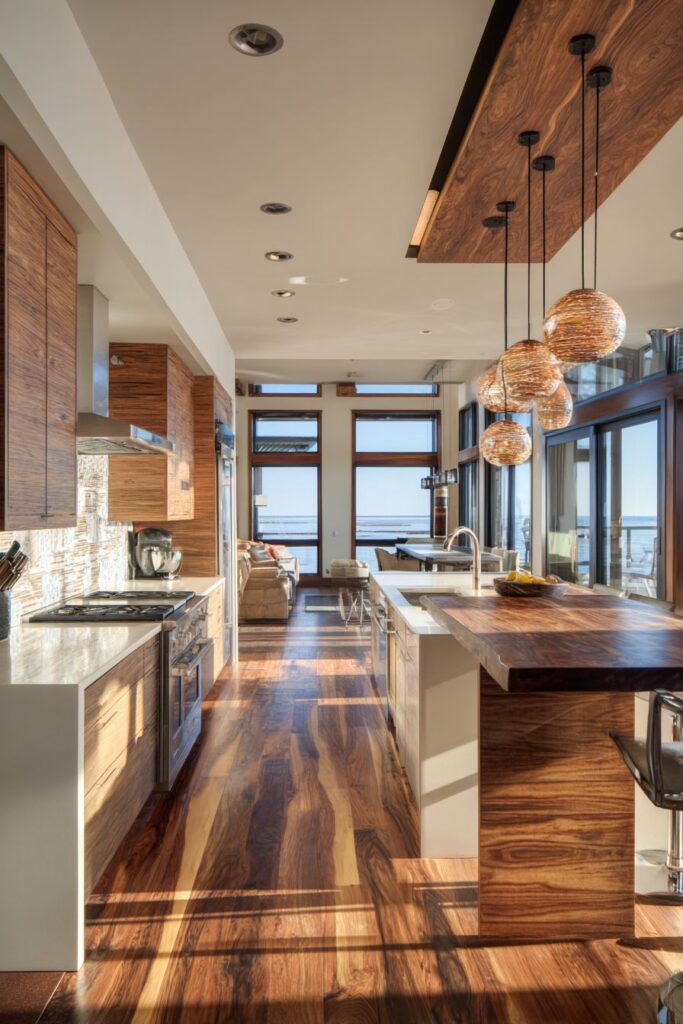
Abundant natural light from large windows highlights the wood textures and grain patterns while revealing subtle color variations throughout the day. The sophisticated use of wood as both functional cabinetry and decorative wainscoting demonstrates how natural materials can serve multiple design purposes in contemporary settings.

Key Design Tips:
- Use horizontal wood orientation to create visual width and movement
- Match wainscoting wood to upper cabinetry for design continuity
- Contrast light and dark wood species for dramatic visual impact
- Apply clear finishes to highlight natural wood beauty and grain patterns
- Maximize natural light to showcase wood texture variations
18. Reclaimed Chestnut Beam Ceiling Drama
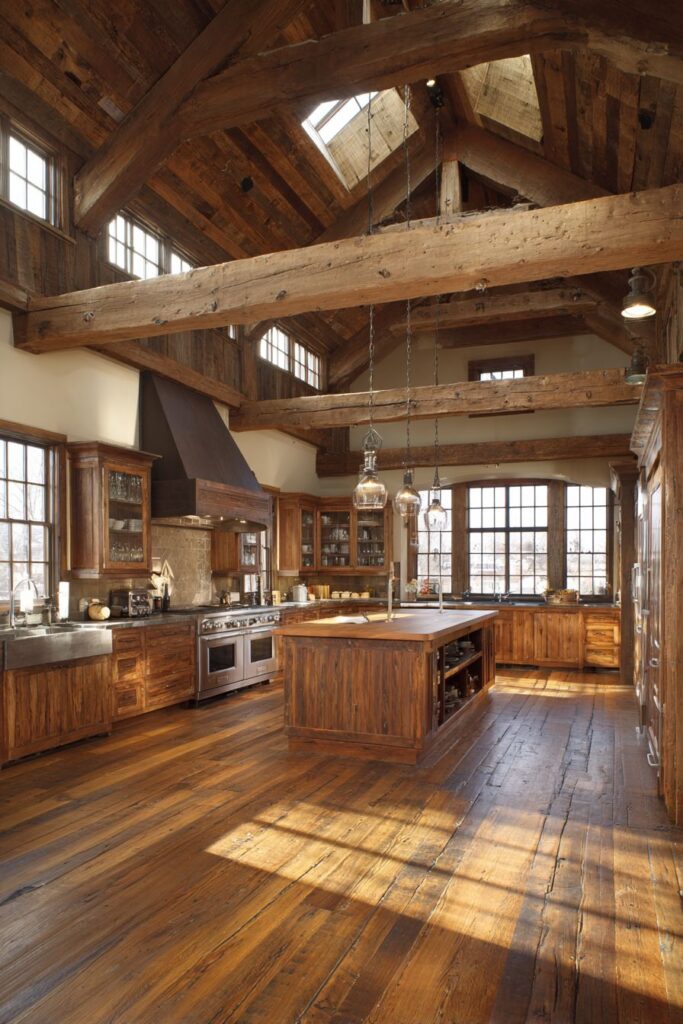
Architectural drama reaches new heights in this wood kitchen featuring exposed wooden beams crafted from reclaimed chestnut with natural patina and authentic character marks that tell stories of the wood’s previous life. The substantial overhead elements create impressive visual weight while the varied tones and textures add natural beauty that changes throughout the day.
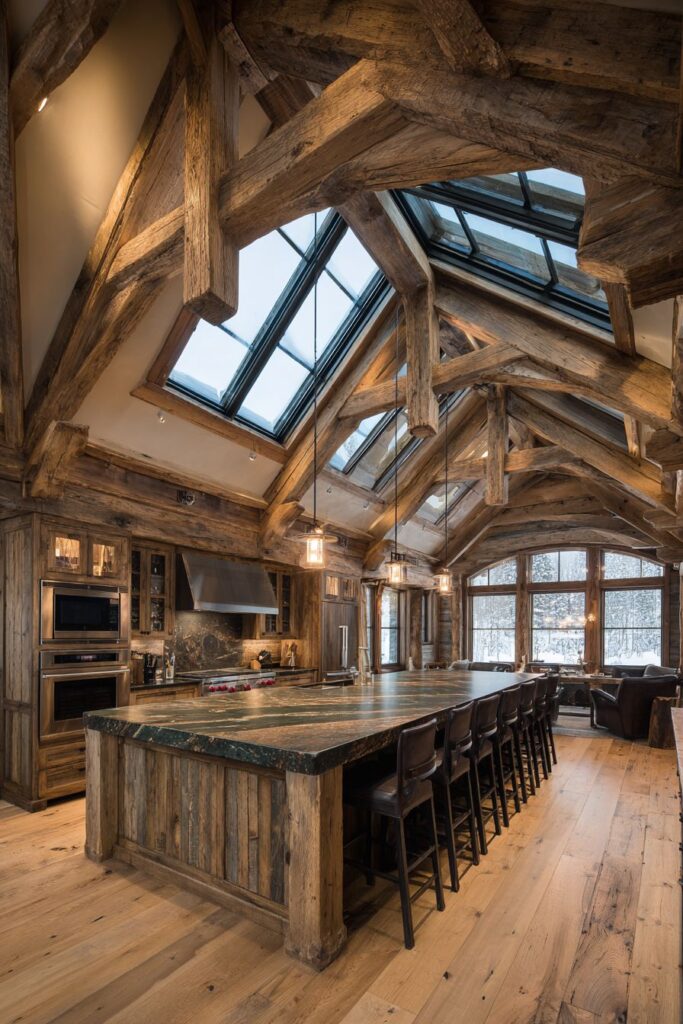
The kitchen cabinetry below features complementary wood tones that create cohesive rustic design while modern appliances seamlessly integrate contemporary functionality. The successful combination of authentic historical materials with current conveniences demonstrates how reclaimed elements can enhance rather than compromise modern living.
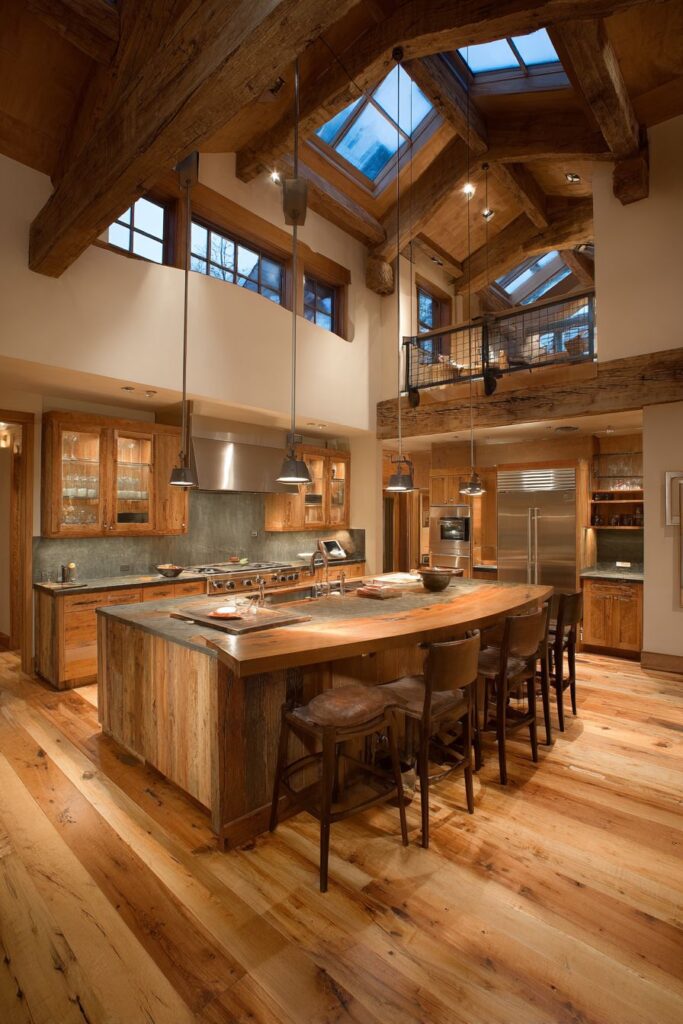
Natural light filtering through strategically placed clerestory windows above dramatically highlights the dimensional quality and varied character of the wooden beam ceiling. The interplay of light and shadow across the textured wood surfaces creates constantly changing visual interest that brings the space to life.
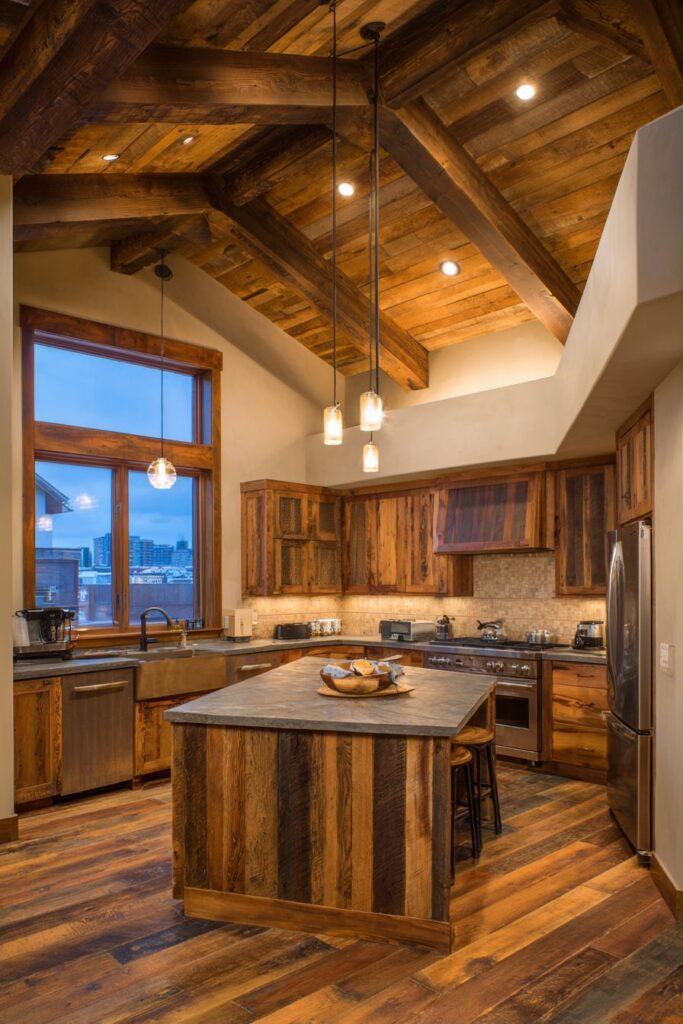
Key Design Tips:
- Use reclaimed wood beams for authentic character and architectural impact
- Match ceiling beams with cabinetry wood tones for design cohesion
- Integrate modern appliances seamlessly with rustic wood elements
- Add clerestory windows to highlight overhead architectural features
- Embrace natural patina and character marks as design assets
19. Oak Window Shutters Design Integration
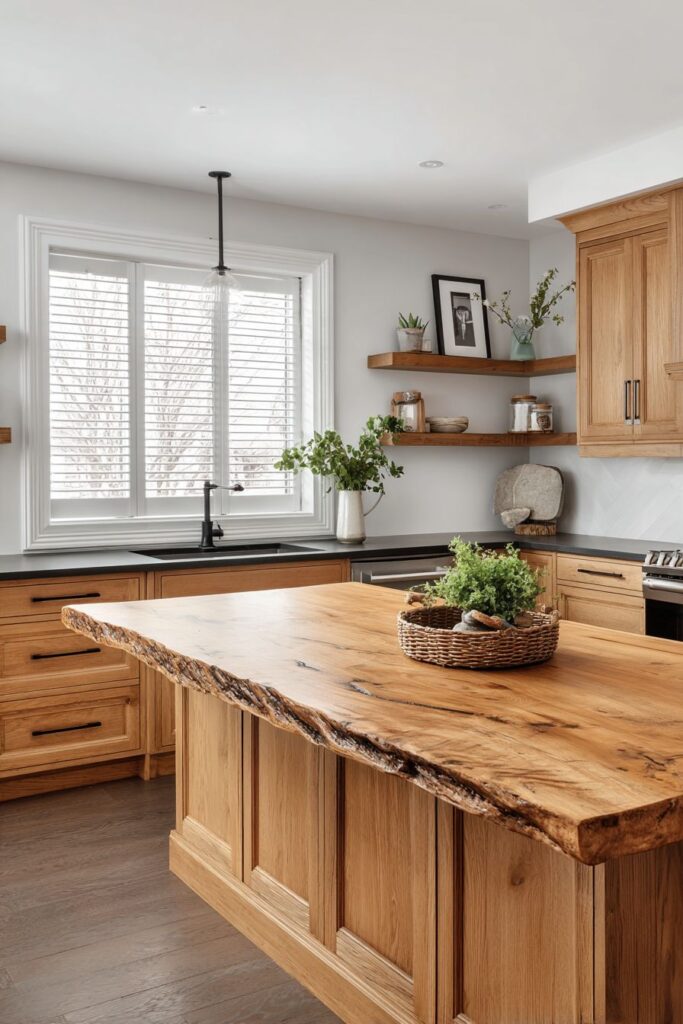
Design continuity reaches perfection in this wood kitchen featuring custom wooden window treatments with natural oak shutters that perfectly match the surrounding cabinetry wood tones. The cohesive use of oak throughout creates seamless integration between functional elements and decorative features while providing both privacy control and design consistency.
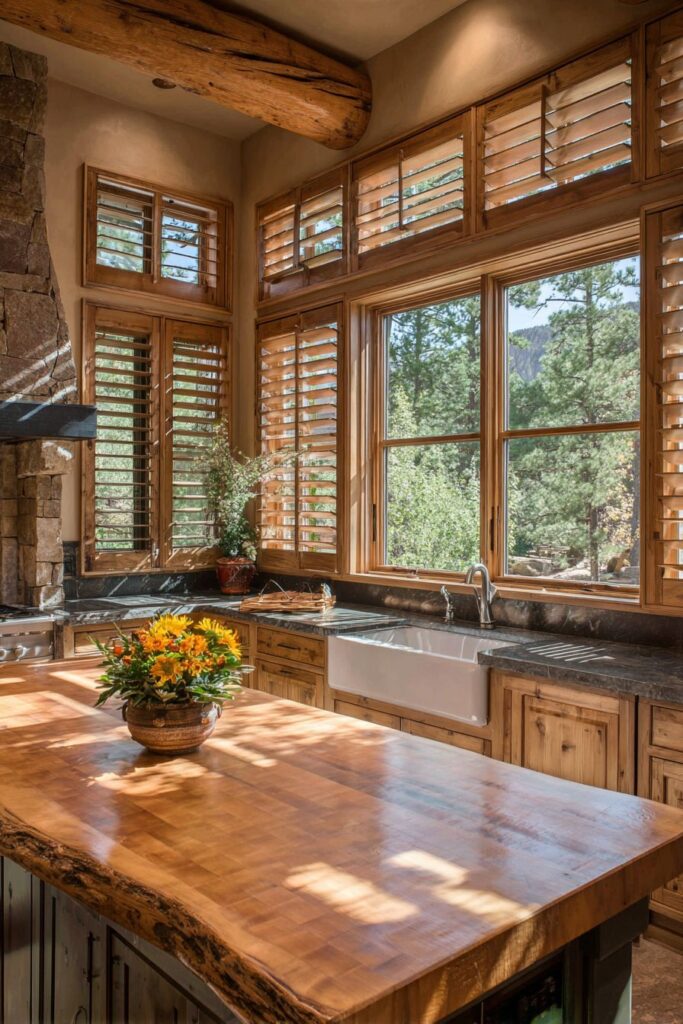
The kitchen island showcases a substantial wooden countertop with natural edge details that add organic character while the coordinated window shutters provide both practical function and visual continuity. The adjustable wooden slats offer flexible light control while maintaining the overall design aesthetic.
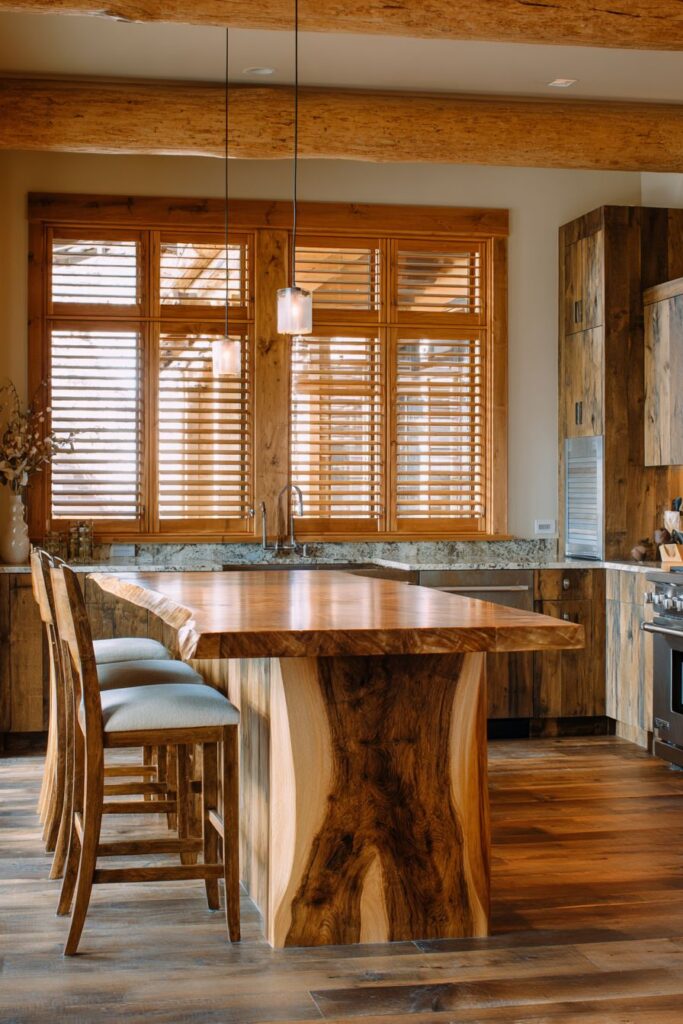
Natural light filtering through the adjustable wooden slats creates fascinating shadow patterns that play across the wood surfaces throughout the day, adding dynamic visual interest that changes with the sun’s movement. The thoughtful integration of functional window treatments as design elements demonstrates superior planning and attention to detail.
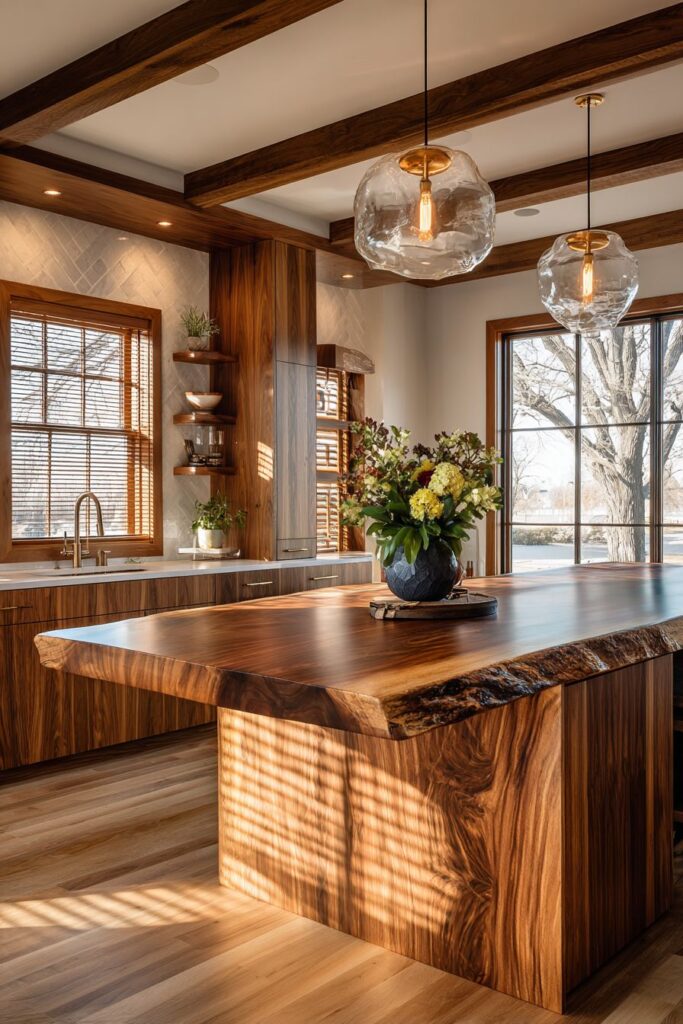
Key Design Tips:
- Match window treatment wood to surrounding cabinetry for seamless integration
- Use adjustable shutters for flexible light control and privacy options
- Incorporate natural edge details for organic character and visual interest
- Plan for changing shadow patterns as dynamic design elements
- Coordinate all wood elements for comprehensive design continuity
20. Wooden Kitchen Accessories Display Art
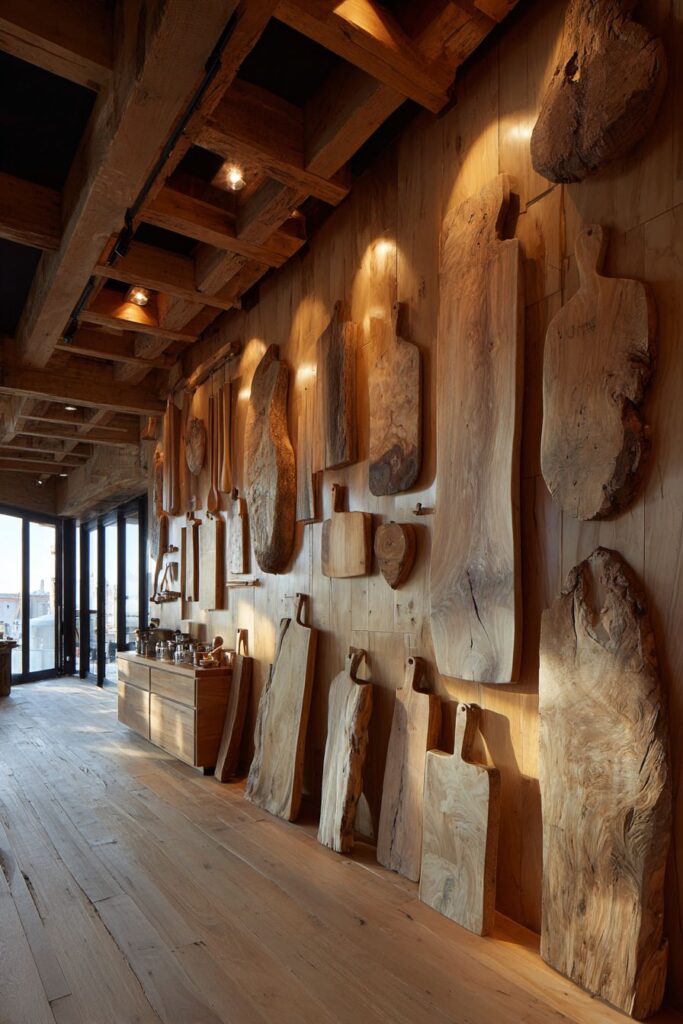
Artisanal beauty meets functional storage in this wood kitchen displaying a carefully curated collection of wooden cutting boards and utensils arranged on open shelving crafted from thick walnut slabs. The varied wood grains, natural colors, and handcrafted quality of the collection create both practical storage and decorative visual interest that celebrates wood’s natural beauty.
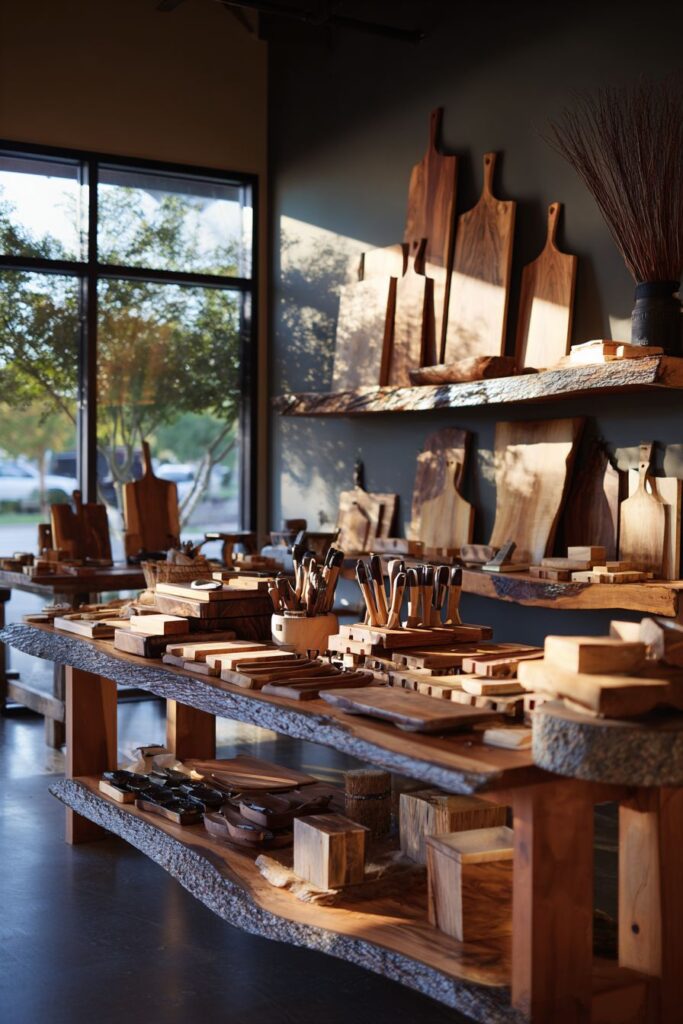
The surrounding kitchen features cabinetry in complementary wood tones while the thoughtful display arrangement creates functional storage that doubles as decorative art. The layered textures, varied grain patterns, and natural color variations within the wooden accessories collection demonstrate how functional items can serve as beautiful design elements.
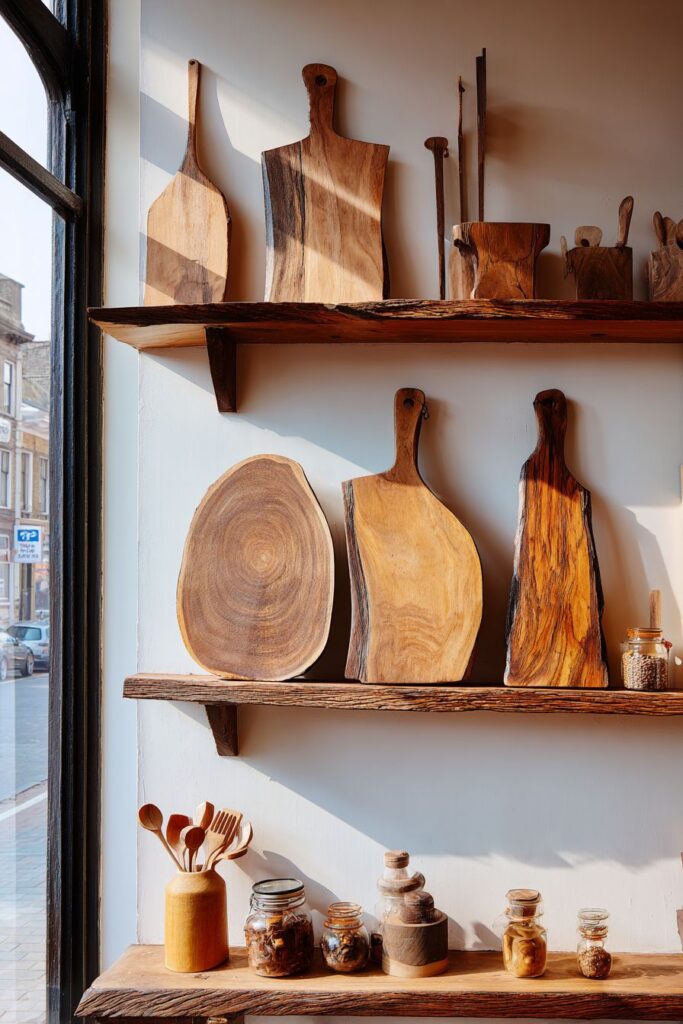
Natural light from nearby windows illuminates the varied wood grains and subtle color differences within the collection while highlighting the superior craftsmanship and natural beauty of quality wooden kitchen accessories. The artisanal quality and thoughtful arrangement transform everyday tools into beautiful decorative elements.
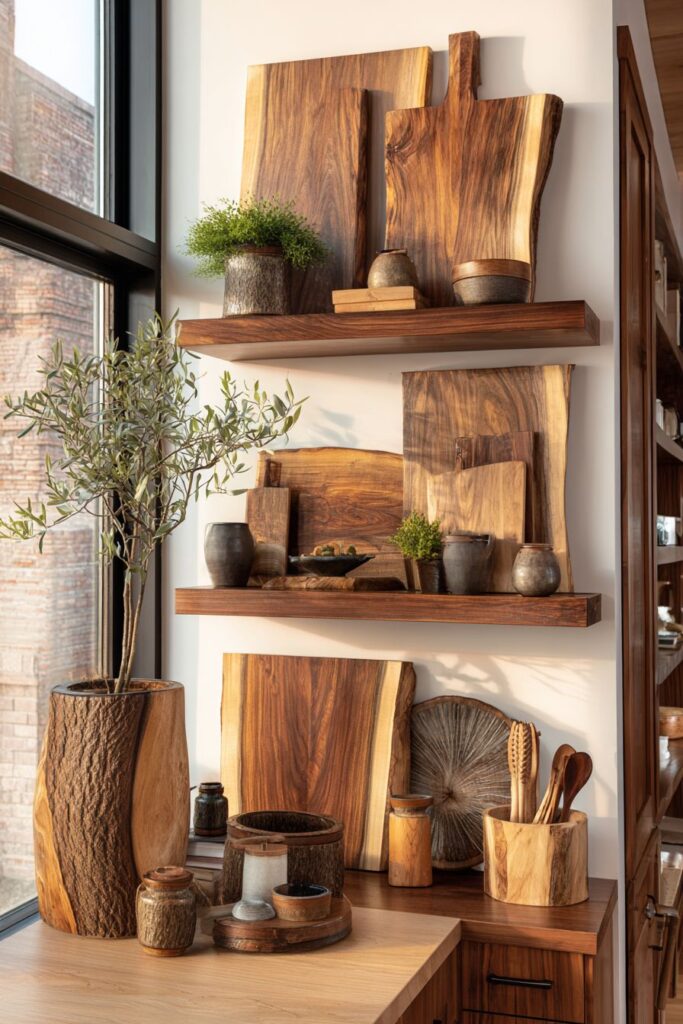
Key Design Tips:
- Display wooden accessories as both functional storage and decorative art
- Choose varied wood species for visual interest and natural beauty
- Use open shelving to showcase handcrafted quality and grain patterns
- Position displays near natural light sources for optimal illumination
- Arrange collections thoughtfully to create visual impact and easy access
Why These Wood Kitchen Designs Represent the Best in Natural Beauty
These twenty wood kitchen designs represent the pinnacle of natural material integration, showcasing how wood’s inherent beauty, versatility, and warmth can create spaces that are both highly functional and emotionally compelling. Each design demonstrates different aspects of wood’s remarkable adaptability – from the rich sophistication of walnut and cherry to the clean minimalism possible with birch and maple. The rustic charm of reclaimed barn wood, contemporary sleekness of horizontal-grain teak, and traditional elegance of raised-panel cherry all prove that wood transcends stylistic boundaries while maintaining its essential character.
The live-edge countertops, waterfall-edge installations, and mixed wood species combinations featured throughout these designs showcase wood’s ability to serve as both structural element and artistic statement. Whether incorporated as floating shelves, architectural range hoods, ceiling beams, or integrated breakfast bars, wood brings organic beauty and natural warmth that synthetic materials simply cannot replicate. The quarter-sawn oak storage systems, reclaimed chestnut beams, and custom cedar range hoods demonstrate how quality craftsmanship and premium materials create lasting value and enduring beauty.
These designs excel because they embrace wood’s natural characteristics – the grain patterns, color variations, live edges, and authentic patina – rather than attempting to hide or minimize them. The herringbone backsplashes, distressed farmhouse finishes, and natural edge breakfast bars celebrate imperfection and individuality as design assets. The careful integration of modern appliances, contemporary lighting, and engineered countertops proves that natural wood elements enhance rather than compromise modern functionality.
The Scandinavian minimalism, transitional mixed-materials, compact efficiency solutions, and architectural statement pieces featured in these designs demonstrate wood’s universal appeal across different design philosophies and space constraints. From small kitchen efficiency to grand architectural drama, wood adapts to any scale while maintaining its essential warmth and character. The custom storage solutions, integrated seating options, and display opportunities show how wood can solve practical problems while adding beauty and value.
Conclusion
Wood kitchens represent timeless design at its finest, where natural beauty and functional excellence converge to create spaces that nurture both body and soul. These twenty stunning designs demonstrate wood’s remarkable versatility – from the dramatic impact of rich walnut cabinetry to the serene simplicity of Scandinavian birch, from the authentic character of reclaimed barn wood to the sleek sophistication of contemporary teak.
The enduring appeal of wood lies in its ability to bring warmth, character, and natural beauty into our daily lives while adapting to any design style or functional requirement. Whether you’re drawn to traditional elegance, rustic charm, contemporary minimalism, or transitional sophistication, wood provides the perfect foundation for creating kitchens that feel both personally meaningful and universally appealing.
As you consider incorporating these ideas into your own kitchen design, remember that the most successful wood kitchens celebrate rather than hide the natural characteristics that make each piece unique. Embrace the grain patterns, color variations, and organic edges that tell the story of each tree’s growth, and don’t be afraid to mix different wood species or combine natural materials with modern conveniences. The result will be a kitchen that not only serves your practical needs but also provides daily connection to nature’s enduring beauty and the skilled craftsmanship that transforms raw materials into lasting works of functional art.
